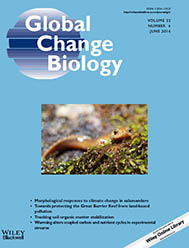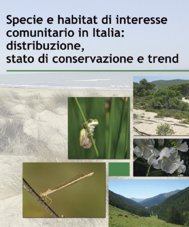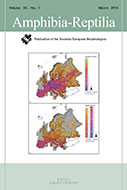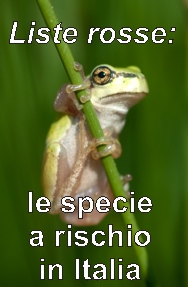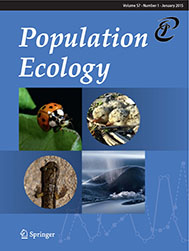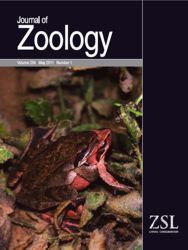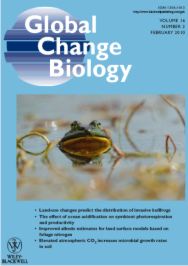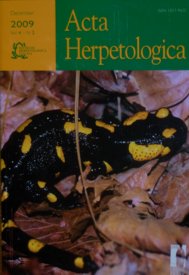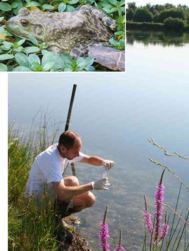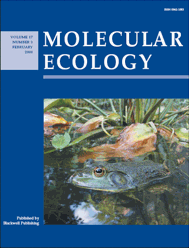| home | best publications |
To respect copyright laws, please request permission by email (francesco.ficetola [AT] gmail.com) before downloading PDFs
Peer reviewed publications:
  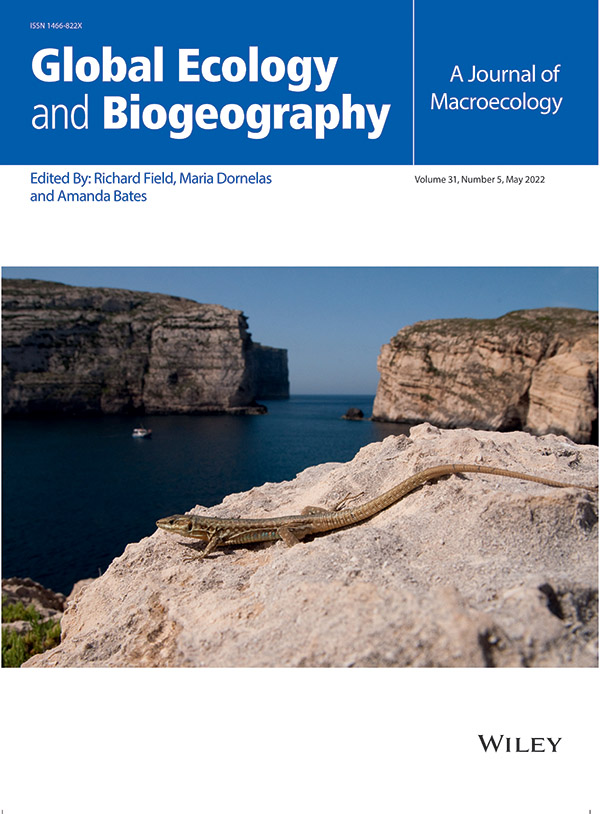 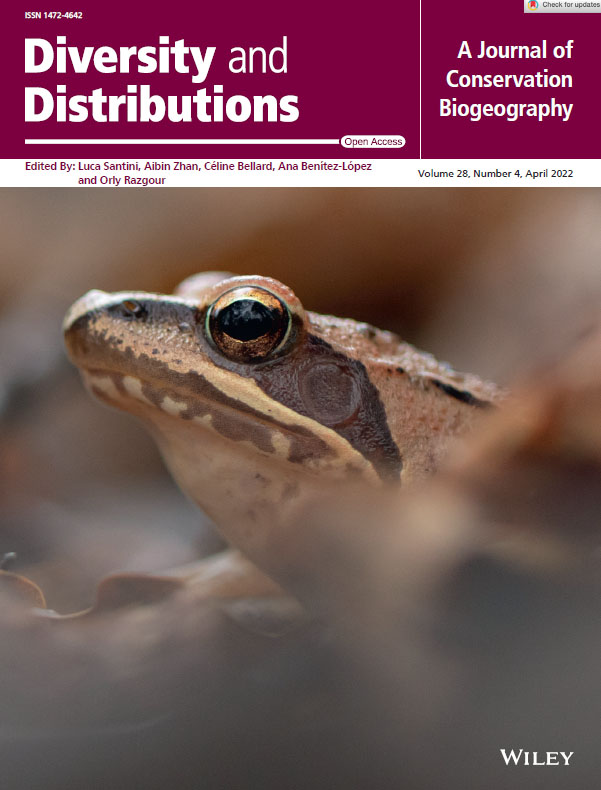 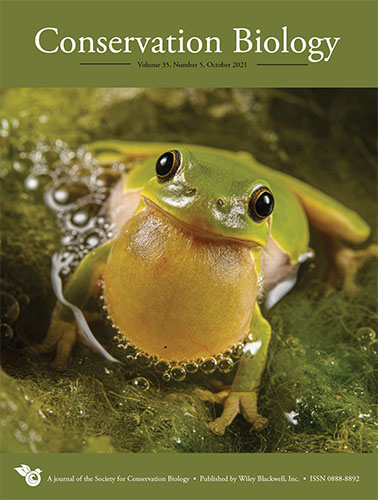 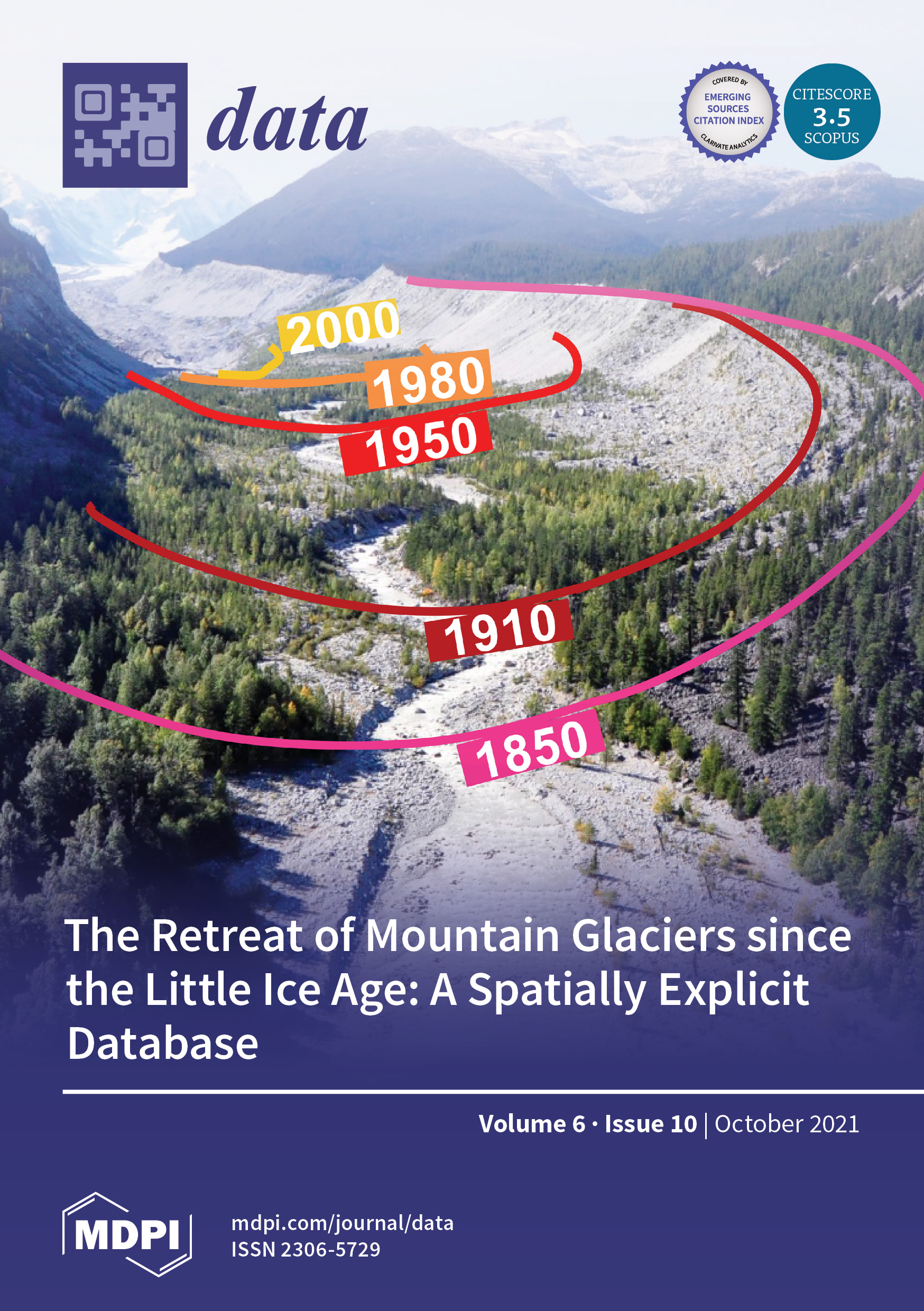  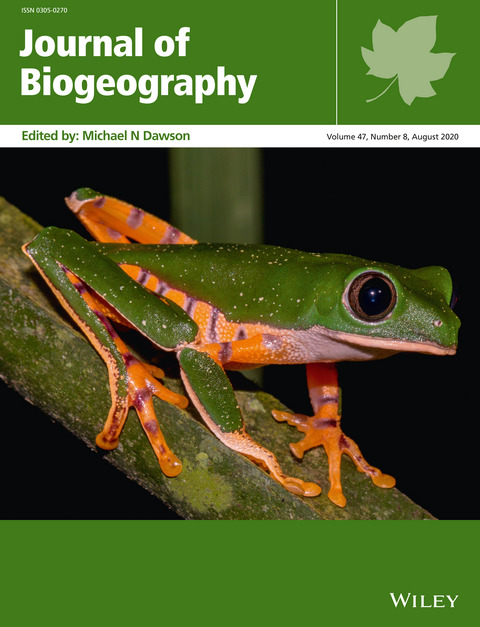 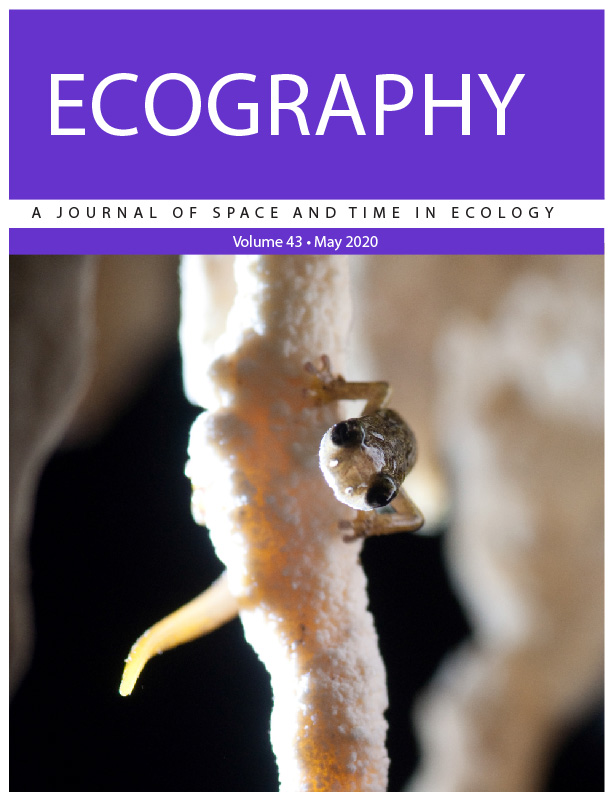  
|
2024 - in press
Falaschi, M., Ficetola, G.F., Viviano, A., Mazza, G., Mori, E., in press. Environmental suitability and potential range expansion of the Eurasian beaver in Italy. Animal Conservation, https://doi.org/10.1111/acv.12910. Berrilli, E., Gambioli, B., Bombi, P., Garzia, M., Muraro, M., Pardo, C., Reale, M., Sherpa, S., Ficetola, G.F., Vignoli, L. & Salvi, D. 2024. Subspecies inflation hampers conservation efforts: a case study on wall lizards. Biological Journal of the Linnean Society, in press, https://doi.org/10.1093/biolinnean/blae001 Böning, P., Lötters, S., Barzaghi, B., Bock, M., Bok, B., Bonato, L., Ficetola, G.F. et al. in press. Alpine salamanders at risk? The current status of an emerging fungal pathogen PLoS ONE Cantera, I., Carteron, A., Guerrieri, A., Marta, S., Bonin, A., Ambrosini, R. [...] & Ficetola, G.F., in press. The importance of species addition versus replacement varies over succession in plant communities after glacial retreat. Nature Plants 10, 256-267 Cantera, I. & Ficetola, G.F. 2024. Key mechanisms shaping plant succession are dynamic over time. Nature Plants 10, 202-203 Carteron, A., Cantera, I., Guerrieri, A., Marta, S., Bonin, A., Ambrosini, R. [...] & Ficetola, G.F., 2024. Dynamics and drivers of mycorrhizal fungi after glacier retreat. New Phytologist 242, 1739-1752. Lin, Q., Zhang, K., Giguet-Covex, C., Arnaud, F., McGowan, S., Gielly, L., Capo, E., Huang, S., Ficetola, G.F., Shen, J., Dearing, J.A., Meadows, M.A., 2024. Transient social-ecological dynamics reveal signals of decoupling in a highly disturbed Anthropocene landscape. Proceedings of the National Academy of Sciences of the United States of America 121, e2321303121. Ficetola, G.F., Guerrieri, A., Cantera, I., Bonin, A., 2024. In silico assessment of 18S rDNA metabarcoding markers for the characterization of nematode communities. PLoS ONE 19, e0298905. Balestra, V., Galbiati, M., Lapadula, S., Zampieri, V., Cassarino, F., Gajdošová, M., Barzaghi, B., Manenti, R., Ficetola, G.F., Bellopede, R., 2024. Microplastic pollution in the stygobiont habitats: first investigation and characterization in the Classical Karst. Journal of Environmental Management 356, 120672. Lunghi, E., Ficetola, G.F., Manenti, R., Mancinelli, G., 2024. Yearly variation in individual diet specialization: Evidence from cave salamanders. Global Ecology and Conservation 51, e02864. Manenti, R., Di Nicola, M.R., Zampieri, V., Grassi, G., Creanza, T., Mauri, E., Ficetola, G.F., Barzaghi, B., 2024. Wandering outside of the Styx: Surface activity of an iconic subterranean vertebrate, the olm (Proteus anguinus). Ecology, e4252. Guerrieri, A., Cantera, I., Marta, S., Bonin, A., Carteron, A., Ambrosini, R., Caccianiga, M. [...] & Ficetola, G.F. 2024. Local climate modulates the development of soil nematode communities after glacier retreat. Global Change Biology 30. e17057. Sherpa, S., Salvi, D., Silva-Rocha, I., Capblancq, T., Paris, J.R., Carretero, M.A., Ficetola, G.F., 2024. Reconstructing the complex colonization histories of lizards across Mediterranean archipelagos. Journal of Biogeography 51, 157-172. Manenti, R., Vinci, L., Barzaghi, B., Lombardi, B., Teodoro, C., Baglioni, L., Melotto, A., Ficetola, G.F., 2024. Sit and wait foraging is not enough in food-deprived environments: evidence from groundwater and salamanders. Animal Behaviour 207, 191-200. 2023 Mammola, S., Falaschi, M., Ficetola, G.F. 2023. Biodiversity communication in the digital era through the Emoji tree of life. iScience 26, 108569. Paper highlited by Nature , Science and many newspapers across the world Marta, S., Zimmer, A., Caccianiga, M., Gobbi, M., Ambrosini, R., Azzoni, R.S., Gili, F., Pittino, F., Thuiller, W., Provenzale, A., Ficetola, G.F., 2023. Heterogeneous changes of soil microclimate in high mountains and glacier forelands. Nature Communications 14, 5306 Sherpa, S., Paris, J., Silva-Rocha, I., Di Canio, V., Carretero, M.A., Ficetola, G.F., Salvi, D., 2023. Genetic depletion does not prevent rapid evolution in island-introduced lizards. Ecology and Evolution 13, e10721. Huston, G.P. et al. 2023. Detection of fish sedimentary DNA in aquatic systems: A review of methodological challenges and future opportunities. Environmental DNA 5, 1449-1472. Ficetola, G.F., Taberlet, P., 2023. Towards exhaustive community ecology via DNA metabarcoding. Molecular Ecology 32, 6320-6329. https://doi.org/10.1111/mec.16881. Guerrieri, A., Carteron, A. [...] , Ficetola, G.F., 2023. Metabarcoding data reveal vertical multi-taxa variation in topsoil communities during the colonization of deglaciated forelands. Molecular Ecology 32, 6304-6319. DOI: 10.1111/mec.16669. Giachello, S., Cantera, I., Carteron, A., Marta, S., Cipriano, C., Guerrieri, A., Bonin, A., Thuiller, W., Ficetola, G.F., 2023. Toward a common set of functional traits for soil protists. Soil Biology and Biochemistry 187, 109207. Falaschi, M., Marta, S., Lo Parrino, E., Roll, U., Meiri, S., Ficetola, G.F., 2023. Global bioregions of reptiles confirm the consistency of bioregionalisation processes across vertebrate clades. Global Ecology and Biogeography, 32, 1272-1284. Ficetola, G.F., Manenti, R., Lo Parrino, E., Muraro, M., Barzaghi, B., Messina, V., Giachello, S., Melotto, A., Falaschi, M., 2023. Decline and Extinction of the Italian Agile Frog Rana latastei from Core Areas of Its Range. Animals 13, 3187. Marta, S., Druella, D., Talarico, L., Ficetola, G.F., Gratton, C., 2023. Spatial prioritization of amphibian intraspecific genetic diversity: The need of accounting for palaeoenvironmental legacies. Biological Conservation 284, 110179. Manenti, R., Forlani, M., Lapadula, S., Galbiati, M., Barzaghi, B., Ficetola, G.F., Melotto, A., 2023. Landscape of fear in freshwater ecotones: how predation risk and light conditions affect mesopredator activity and foraging in springs. Freshwater Biology 68, 1716–1725. Dondero, L., Allaria, G., Rosa, G., Costa, A., Ficetola, G.F., Cogoni, R., Grasselli, E., Salvidio, S., 2023. Threats of the emerging pathogen Batrachochytrium salamandrivorans (Bsal) to Italian wild salamander populations. Acta Herpetologica 18, 3-9 Zawierucha, K. et al. 2023. Cryophilic Tardigrada have disjunct and bipolar distribution and establish long-term stable, low-density demes. Polar Biology 46, 1011–1027. Campbell Grant, E.H. et al. 2023. Priority Research Needs to Inform Amphibian Conservation in the Anthropocene. Conservation Science and Practice 2023, e12988. Gabrielli, M. et al. 2023. High-quality reference genome of the critically endangered Aeolian wall lizard, Podarcis raffonei. Journal of Heredity 114, 279–285. Licata, F., Mohanty, N.P. [...], Ficetola, G.F., 2023. Using public surveys to rapidly profile biological invasions in hard-to-monitor areas Animal Conservation 26, 477-491, https://doi.org/10.1111/acv.12835. Theissinger, K. et al. 2023. How genomics can help biodiversity conservation. Trends in Genetics 39, 545-559. Giguet-Covex, C. et al. 2023. Mountain agro-ecosystems long-term trajectories in the North-Western Alps. Regional Environmental Change 23, 58. Licata, F., Ficetola, G.F. et al. 2023. Spatial ecology of the invasive Asian common toad in Madagascar and its implications for invasion dynamics. Scientific Reports 13, 3526. Manenti, R., Galbiati, M., Lapadula, S., Forlani, M., Barzaghi, B., Melotto, A., Ficetola, G.F., 2023. Behavioural drivers of ecotones exploitation: groundwater animals activity in springs. Behavioral Ecology and Sociobiology 77, 23. Manenti, R., Kristensen, N., Cogliati, P., Barzaghi, B., Melotto, A., Ficetola, G.F., 2023. Larval development and poor trophic resource availability: local adaptations and plasticity in a widespread amphibian species. Journal of Evolutionary Biology 36, 529-541. Lo Parrino, E., Falaschi, M., Manenti, R., Ficetola, G.F., 2023. All that changes is not shift: methodological choices influence niche shift detection in freshwater invasive species. Ecography 2023, e06432. Bonin, A., Guerrieri, A., Ficetola, G.F., 2023. Optimal sequence similarity thresholds for clustering of molecular operational taxonomic units in DNA metabarcoding studies. Molecular Ecology Resources 23, 368-381. 2022 Lunghi, E., Cianferoni, F., Corti, C., Zhao, Y., Manenti, R., Ficetola, G.F., Mancinelli, G., 2022. The trophic niche of subterranean populations of Speleomantes italicus. Scientific Reports, https://doi.org/10.1038/s41598-41022-21819-41598. Muraro, M., Falaschi, M., Ficetola, G.F., 2022. Patterns of Performance Variation Between Animal Hybrids and their Parents: A Meta-analysis. Evolutionary Biology 49, 482–496. Muraro, M., Sherpa, S. [...], D., Ficetola, G.F., 2022. Condition- and context-dependent variation of sexual dimorphism across lizard populations at different spatial scales. Scientific Reports 12, 16969. Barzaghi, B., Melotto, A., Cogliati, P., Manenti, R., Ficetola, G.F., 2022. Factors determining the dorsal coloration pattern of aposematic salamanders. Scientific Reports 12, 17090. Falaschi, M., Gibertini, C., Lo Parrino, E., Muraro, M., Barzaghi, B., Manenti, R., Ficetola, G.F., 2022. Assessing population trends of species with imperfect detection: Double count analyses and simulations confirm reliable estimates in brown frogs. Animals 12, 2085. Cogliati, P., Barzaghi, B., Melotto, A., Ficetola, G.F., Manenti, R., 2022. How Trophic Conditions Affect Development of Fire Salamander (Salamandra salamandra) Larvae: Two Extreme Cases. Diversity, 487. Nanni, V. et al. 2022. Global response of conservationists across mass media likely constrained bat persecution due to COVID-19. Biological Conservation, 109591. Nania, D., Lumbierres, M., Ficetola, G.F., Falaschi, M., Pacifici, M., Rondinini, C., 2022. Maps of Area of Habitat for Italian Amphibians and Reptiles. Nature Conservation 49, 117–129. Falaschi, M., Muraro, M., Gibertini, C., Delle Monache, D., Lo Parrino, E., Faraci, F., Belluardo, F., Di Nicola, M.R., Manenti, R., Ficetola, G.F., 2022. Explaining declines of newt abundance in northern Italy. Freshwater Biology, https://doi.org/10.1111/FWB.13909. Bonardi, A., Ficetola, G.F., Razzetti, E., Canedoli, C., Falaschi, M., Lo Parrino, E., Rota, N., Padoa-Schioppa, E., Sindaco, R., 2022. ReptIslands: Mediterranean islands and their reptile fauna. Global Ecology and Biogeography 31, 840-847. DOI: 10.1111/geb.13490. Diolaiuti, G. et al. 2022. Immersive and virtual tools to see and understand climate change impacts on glaciers: a new challenge for scientific dissemination and inclusive education. Geografia Fisica E Dinamica Quaternaria 44, 83-93. Lunghi, E., Corti, C., Biaggini, M., Merilli, S., Manenti, R., Zhao, Y., Ficetola, G.F., Cianferoni, F., 2022. Capture-mark-recapture data on the strictly protected Speleomantes italicus. Ecology, in press. Cheddadi, R., Taber, A.B., Boyer, F., Coissac, E., Rhoujjati, A., Payne, D., Remy, C., Khater, C., Ficetola, G.F., 2022. Priority conservation areas for Cedrus Atlantica in the Atlas mountains, Morocco. Conservation Science and Practice, e12680. Lunghi, E., Valle, B., Guerrieri, A., Bonin, A., Cianferoni, F., Manenti, R., Ficetola, G.F., 2022. Environmental DNA of insects and springtails from caves reveals complex processes of eDNA transfer in soils. Science of the Total Environment 826, 154022. Dalpasso, A., Ficetola, G.F., Giachello, S., Lo Parrino, E., Manenti, R., Muraro, M., Falaschi, M., 2022. Similar species, different fates: abundance dynamics in spatially structured populations of common and threatened frogs. Diversity and Distributions 28, 770-781, https://doi.org/10.1111/ddi.13483. Manenti, R., Mercurio, S., Melotto, A., Barzaghi, B., Epis, S., Tecilla, M., Pennati, R., Scarì, G., Ficetola, G.F., 2022. A new disease caused by an unidentified etiological agent af-fects European salamanders. Animals 12, 696. Formenti, G. et al. 2022. The era of reference genomes in conservation genomics. Trends in Ecology & Evolution, 10.1016/j.tree.2021.1011.1008. Canedoli, C., Ficetola, G.F., Corengia, D., Tognini, P., Ferrario, A., Padoa-Schioppa, E., 2022. Integrating landscape ecology and the assessment of ecosystem services in the study of karst areas. Landscape Ecology 37, 347-365. published online at www.springerlink.com Melotto, A., Ficetola, G.F., Alari, E., Romagnoli, S., Manenti, R., 2022. Visual recognition and coevolutionary history drive responses of amphibians to an invasive predator. Behavioral Ecology 32, 1352-1362. Licata, F., Harison, R.F., Ficetola, G.F., Freeman, K., Muller, B.J., Ponga, V.R., Andreone, F., Crottini, A., 2022. Toad invasion of Malagasy forests triggers severe mortality of a predatory snake. Biological Invasions 24, 1189-1198. Rozwalak, P. et al. 2022. Cryoconite – From minerals and organic matter to bioengineered sediments on glacier's surfaces. Science of the Total Environment 807, 150874 2021 Ficetola, G.F. et al. 2021. Dynamics of ecological communities following current retreat of glaciers. Annual review of Ecology Evolution and Systematics 52, 405-426. Marta, S. [...] & Ficetola, G.F., 2021. The Retreat of Mountain Glaciers since the Little Ice Age: a Spatially Explicit Database. Data 6, 10.3390/data6100107 Valle, B., Cucini, C., Nardi, F., Caccianiga, M., Gobbi, M., Di Musciano, M., Carapelli, A., Ficetola, G.F., Guerrieri, A., Fanciulli, P.P., 2021. Desoria calderonis sp. nov., a new species of alpine cryophilic springtail (Collembola: Isotomidae) from Apennines (Italy), with phylogenetic and ecological considerations. European Journal of Taxonomy 787, 32–52. Palomar, G. et al. 2021. Coevolution between MHC Class I and Antigen-Processing Genes in Salamanders. Molecular Biology and Evolution 38, 5092-5106. Falaschi, M., Giachello, S., Lo Parrino, E., , M., Manenti, R., Ficetola, G.F., 2021. Long-term drivers of survival and colonization dynamics in spatially-structured amphibian populations. Conservation Biology 35, 1530–1539. Definitive version available at https://conbio.onlinelibrary.wiley.com/ Muraro, M., Romagnoli, S., Barzaghi, B., Falaschi, M., Manenti, R., Ficetola, G.F., 2021. Invasive predators induce plastic and adaptive responses during embryo development in a threatened frog. NeoBiota 70, 69-86. Bates, A. E. et al. 2021. Global COVID-19 lockdown highlights humans as both threats and custodians of the environment. Biological Conservation 263, 109175. Melotto, A., Ficetola, G.F., Pennati, R., Ancona, N., Manenti, R., 2021. Raised by aliens: constant exposure to an invasive predator triggers morphological but not behavioural plasticity in a threatened species tadpoles. Biological Invasions 23, 3777–3793. Available at www.link.springer.com Licata, F., Andreone, F., Crottini, A., Harison, R.F., Ficetola, G.F., 2021. Does spatial sorting occur in the invasive Asian toad in Madagascar? Insights into the invasion unveiled by morphological analyses. Journal of Zoological Systematics and Evolutionary Research 59, 2161–2169, https://doi.org/10.1111/jzs.12523. Marta, S., Brunetti, M., Manenti, R., Provenzale, A., Ficetola, G.F., 2021. Climate and land-use changes drive taxonomic and functional biodiversity through time. Nature Ecology & Evolution 5, 1291–1300. Definitive version available at www.nature.com Ficetola, G.F., Mazel, F., Falaschi, M., Marta, S., Thuiller, W., 2021. Determinants of zoogeographical boundaries differ between vertebrate groups. Global Ecology and Biogeography 30, 1796-1809. Definitive version availabe at www.onlinelibrary.com Ficetola, G.F., Bonin, A., Boyer, F., Valentini, A., Meyer, A., Dejean, T., Gaboriaud, C., Usseglio-Polatera, P., Taberlet, P., 2021. Comparison of markers for the monitoring of freshwater benthic biodiversity through DNA metabarcoding. Molecular Ecology 30, 3189–3202. DOI: 10.1111/mec.15632. Guerrieri, A., Bonin, A., Münkemüller, T., Gielly, L., Thuiller, W., Ficetola, G.F. 2021. Effects of soil preservation for biodiversity monitoring using environmental DNA. Molecular Ecology 30, 3313-3325. DOI: 10.1111/mec.15674 Meyer, A., Boyer, F., Valentini, A., Bonin, A., Ficetola, G.F. et al. 2021. Morphological vs. DNA metabarcoding approaches for the evaluation of stream ecological status with benthic invertebrates: Testing different combinations of markers and strategies of data filtering. Molecular Ecology 30, 3203-3220. Ficetola, G.F., Silva-Rocha, I., Carretero, M.A., Vignoli, L., Sacchi, R., Melotto, A., Scali, S., Salvi, D., 2021. Status of the largest extant population of the Critically Endangered Aeolian wall lizard Podarcis raffonei (Capo Grosso, Vulcano island). PLoS ONE 16, e0253631. Lunghi, E., Cianferoni, F., Melilli, S., Zhao, Y., Manenti, R., Ficetola, G.F., Corti, C., 2021. Ecological observations on hybrid populations of European plethodontid salamanders, genus Speleomantes. Diversity 13, 285. Lunghi, E., Cianferoni, F., Giachello, S., Zhao, Y., Manenti, R., Corti, C., Ficetola, G.F., 2021. Updating photos and stomach contents datasets for two mainland Speleomantes (Hydromantes) salamanders. Scientific Data 8, 150. Gebremedhin, B., Chala, D., Flagstad, O., Bekele, A., Bakkestuen, V., van Morteer, B., Ficetola, G.F., Zimmermann, N., Brochmann, C., Stenseth, N.C., 2021. Quest for new space for restricted range mammals: the case of the endangered Walia ibex. Frontiers in Ecology and Evolution 9, 611632. Brown, A.G. et al. 2021. Ancient DNA, Lipid Biomarkers and Palaeoecological Evidence Reveals Construction and Life on early Medieval Lake Settlements. Scientific Reports 11, 11807. Williams, D., Clark, M., Buchanan, G., Ficetola, G.F., Rondinini, C., Tilman, D. 2021. Proactive Conservation to Prevent Habitat Losses to Agricultural Expansion. Nature Sustainability 4, 314-322. Definitive version available at www.nature.com Mori, E., Di Gregorio, M., Mazza, G., Ficetola, G.F. 2021. Seasonal consumption of insects by the crested porcupine in Central Italy. Mammalia 85, 231–235. Avable at www.degruyter.com Lo Parrino, E., Falaschi, M., Manenti, R., Ficetola, G.F., 2021. Lockdown policy effects on invasive species: a perspective. Biodiversity 22, 35-40. Available at tandfonline.com Rosero, P., Crespo-Pérez, V., Espinosa, R., Andino, P., Barragán, A., Moret, P., Gobbi, M., Ficetola, G.F. et al. 2021. Multi-taxa colonisation along the foreland of a vanishing equatorial glacier. Ecography 44, 1010-1021. Gobbi, M., Ambrosini, R., Casarotto, C., Diolaiuti, G., Ficetola, G.F., Lencioni, V., Pelfini, M., Seppi, S., Smiraglia, C., Tampucci, D., Valle, B., Caccianiga, M., 2021. Vanishing permanent glaciers: Climate change is threatening a European Union habitat (Code 8340) and its poorly known biodiversity. Biodiversity and Conservation 30, 2267–2276. Galiana, N., Barros, C., Braga, J., Ficetola, G.F., Maiorano, L., Thuiller, W., Montoya, J.M., Lurgi, M., 2021. The spatial scaling of food web structure across European biogeographical regions. Ecography 44, 653-664. Khedim, N., Cécillon, L., ... & Ficetola, G.F., 2021. Topsoil organic matter build-up in glacier forelands around the world. Global Change Biology 27, 1662-1677. Manenti, R., Nessi, A., Barzaghi, B., Cioccarelli, S., Villa, M., Ficetola, G.F., 2021. Not only environmental conditions but also human awareness matters: A successful post-Crayfish Plague reintroduction of the White-Clawed Crayfish (Austropotamobius pallipes) in Northern Italy. Frontiers in Ecology and the Environment 9, 621613. Gargioni, C., Monaco, A., Ficetola, G.F., Mori, E., 2021. From the Andes to the Apennines: rise and fall of a free-ranging population of feral llamas. Animals 11, 857. Capo, E. et al. 2021. Lake sedimentary DNA research on past terrestrial and aquatic biodiversity: Overview and recommendations. Quaternary 4,6; doi:10.3390/quat4010006. Arribas, P. et al. 2021. Connecting high-throughput biodiversity inventories – opportunities for a site-based genomic framework for global integration and synthesis. Molecular Ecology 30, 1120–1135; DOI: 10.1111/mec.15797. Palomar, G. et al. 2021. Molecular evolution of antigen processing genes in salamanders: do they coevolve with MHC class I genes? Genome Biology and Evolution 13, evaa259. Mercurio, S., Messinetti, S., Manenti, R., Ficetola, G.F., Pennati, R., 2021. Embryotoxicity characterization of the flame retardant Tris(1-chloro-2-propyl)phosphate (TCPP) in the invertebrate chordates Ciona intestinalis. Journal of Experimental Zoology Part a-Ecological Genetics and Physiology 335, 339–347. Ficetola, G.F., Rubolini, D., 2021. Containment measures limit environmental effects on COVID-19 early outbreak dynamics. Science of the Total Environment 761, 144432. Available online at www.sciencedirect.com Mori, E., Ficetola, G.F., Bartolomei, R., Capobianco, G., Varuzza, P., Falaschi, M., 2021. How the South was won: current and potential range expansion of the crested porcupine in Southern Italy. Mammalian Biology 101, 11-19. Zawierucha, K., Porazinska, D.L., Ficetola, G.F. et al. 2021. A hole in the nematosphere: tardigrades and rotifers dominate the cryoconite hole environment, whereas nematodes are missing. Journal of Zoology 313, 18-36. Definitive version avable at www.onlinelibrary.com 2020 Ficetola, G.F., Fanelli, M., Garizio, L., Falaschi, M., Tenan, S., Ghielmi, S., Laddaga, L., Menegon, M., Delfino, M., 2020. Estimating abundance and habitat suitability in a micro-endemic snake: the Walser viper. Acta Herpetologica, 15, 73-85 Melotto, A., Manenti, R., Ficetola, G.F., 2020. Rapid adaptation to invasive predators overwhelms natural gradients of intraspecific variation. Nature Communications 11, 3608. Read our blog story at the Nature EcoEvo Community! Viganò, M., Ancillotto, L., Agnelli, P., Ficetola, G.F., Mori, E., 2020. Frequency of occurrence and ingested biomass of different prey of the barn owl Tyto alba in an island ecosystem. Birds 1, 5-12. Manenti, R., Melotto, A., Guillaume, O., Ficetola, G.F., Lunghi, E., 2020. Switching from mesopredator to apex predator: how do responses vary in amphibians adapted to cave living? Behavioral Ecology and Sociobiology 74, 126. Manenti, R., Melotto, A., Guillaume, O., Ficetola, G.F., Lunghi, E., 2020. Switching from mesopredator to apex predator: how do responses vary in amphibians adapted to cave living? Behavioral Ecology and Sociobiology 74, 126. Lunghi, E., Giachello, S., Manenti, R., Zhao, Y., Corti, C., Ficetola, G.F., Bradley, J.G., 2020. The post hoc measurement as a safe and reliable method to age and size plethodontid salamanders. Ecology and Evolution 12, 333. Manenti, R., Mori, E., Di Canio, V., Mercurio, S., Picone, M., Caffi, M., Brambilla, M., Ficetola, G.F., Rubolini, D., 2020. The good, the bad and the ugly of COVID-19 lockdown effects on wildlife conservation: Insights from the first European locked down country. Biological Conservation 249, 108728. Hanson, J.O., Rhodes, J.R., Butchart, S.H.M., Buchanan, G., Rondinini, C., Ficetola, G.F., Fuller, R.A., 2020. Global conservation of species’ niches. Nature 580, 232-234 Lunghi, E., Ficetola, G.F., Zhao, Y., Manenti, R., 2020. Are the Neglected Tipuloidea Crane Flies (Diptera) an Important Component for Subterranean Environments? Diversity 12, 333. Feldmeier, S., Schmidt, B.R., Zimmermann, N.E., Veith, M., Ficetola, G.F., Lotters, S., 2020. Shifting aspect or elevation? The climate change response of ectotherms in a complex mountain topography. Diversity and Distributions 63, 1483-1495. Bertolino, S., Ancillotto, L., Bartolomei, P., Benassi, G., Capizzi, D., Gasperini, S., Lucchesi, M., Mori, E., Scillitani, L., Sozio, G., Falaschi, M., Ficetola, G.F., Cerri, J., Genovesi, P., Carnevali, L., Loy, A., Monaco, A., 2020. A framework for prioritizing invasive mammal species for a national list. NeoBiota 62, 31-54. Cheddadi, R., Sarmiento, F.O., Hambuckers, A., Rhoujjati, A., Taberlet, P., Ficetola, F., Henrot, A.J., François, L., Boyer, F., Nourelbait, M., 2020. Multidisciplinary approaches for conservation issues, In: The Elgar Companion to Geography, Transdisciplinarity and Sustainability. eds F.O. Sarmiento, L.M. Frolich, pp. 67-78. Elgar, Cheltenham, UK. Rota, N., Canedoli, C., Ferrè, C., Ficetola, G.F., Guerrieri, A., Padoa-Schioppa, E., 2020. Evaluation of Soil Biodiversity in Alpine Habitats through eDNA Metabarcoding and Relationships with Environmental Features. Forests 11, 738. Foucher, A., Evrard, O., Ficetola, G.F., Gielly, L., Poulain, J., Giguet-Covex, C., Laceby, J.P., Salvador-Blanes, S., Cerdan, O., Poulenard, J., 2020. Persistence of environmental DNA in cultivated soils: implication of this memory effect for reconstructing the dynamics of land use and cover changes. Scientific Reports 10, 10502. Maiorano, L., Montemaggiori, A., Ficetola, G.F., O'Connor, L., Thuiller, W., 2020. Tetra-EU 1.0: a species-level trophic meta-web of European tetrapods. Global Ecology and Biogeography 29, 1452-1457. Falaschi, M., Melotto, A., Manenti, R., Ficetola, F., 2020. Invasive species and amphibian conservation. Herpetologica 76, 216–227. Lunghi, E., Giachello, S., Zhao, Y., Corti, C., Ficetola, G.F., Manenti, R., 2020. Photographic database of the European cave salamanders, genus Hydromantes. Scientific Data 7, 171. Lunghi, E., Manenti, R., Cianferoni, F., Ceccolini, F., Veith, M., Corti, C., Ficetola, G.F., Mancinelli, G., 2020. Inter-specific and inter-population variation in individual diet specialization: do environmental factors have a role? Ecology 101, e03088. Available online at www.wiley.com Vacher, J.P., Chave, J., Ficetola, G.F. et al. 2020. Large-scale DNA-based survey of frogs in Amazonia suggests a vast underestimation of species richness and endemism. Journal of Biogeography. Available online at www.wiley.com Ficetola, F., Lunghi, E., Manenti, R., 2020. Microhabitat analyses support relationships between niche breadth and range size when spatial autocorrelation is strong. Ecography 43, 724–734. Cover article! Lunghi, E., Cianferoni, F., Ceccolini, F., Zhao, Y., Manenti, R., Corti, C., Ficetola, G.F., Mancinelli, G., 2020. Same Diet, Different Strategies: Variability of Individual Feeding Habits across Three Populations of Ambrosi’s Cave Salamander (Hydromantes ambrosii). Diversity 12, 180. Lo Parrino, E., Ficetola, G.F., Manenti, R., Falaschi, M., 2020. Thirty years of invasion: the distribution of the invasive crayfish Procambarus clarkii in Italy. Biogeographia 35, 43-50. Pizzigalli, C., Banfi, F., Ficetola, G.F., Falaschi, M., Mangiacotti, M., Sacchi, R., Zuffi, M.A.L., Scali, S., 2020. Eco-geographical determinants of the evolution of ornamentation in vipers. Biological Journal of the Linnean Society 130, 345–358. Definitive version available at academic.oup.com Manenti, R., Lunghi, E., Barzaghi, B., Melotto, A., Falaschi, M., Ficetola, G.F., 2020. Are salamanders predator of cave-adapted invertebrates in subterranean superficial habitats? Diversity 12, 161; doi:110.3390/d12040161. Romagnoli, S., Ficetola, G.F., Manenti, R., 2020. Presence of invasive crayfish and spawning site selection in brown frogs. PeerJ 8:e8985 https://doi.org/10.7717/peerj.8985 Chen, W., Ficetola, G.F., 2020. Statistical and numerical methods for Sedimentary-ancient-DNA-based study on past biodiversity and ecosystem functioning. Environmental DNA 2, 115-129 Manenti, R., Falaschi, M., Delle Monache, D., Marta, S., Ficetola, G.F., 2020. Network-scale effects of invasive species on spatially-structured amphibian populations. Ecography 43, 119-127. Lunghi, E., Corti, C., Mulargia, M., Zhao, Y., Manenti, R., Ficetola, G.F., Veith, M., 2020. Cave morphology, microclimate and abundance of five cave predators from the Monte Albo (Sardinia, Italy). Biodiversity Data Journal 8, e48623. Bajard, M., Poulenard, J., Sabatier, P., Bertrand, Y., Crouzet, C., Ficetola, G.F., ... , Arnaud, F., 2020. Pastoralism increased vulnerability of a subalpine catchment to flood hazard through changing soil properties. Palaeogeography, Palaeoclimatology, Palaeoecology 538, 109462. O'Connor, L., Pollock, L.J., Braga, J., Ficetola, G.F., Maiorano, L., Martinez-Almoyna, C., Montemaggiori, A., Ohlmann, M., Thuiller, W., 2020. Unveiling the food webs of tetrapods across Europe through the prism of the Eltonian niche. Journal of Biogeography 47, 181-192. Thuiller, W., Gravel, D., Ficetola, G.F., Lavergne, S., Munkemuller, T., Pollock, L.J., Zimmermann, N.E., Mazel, F., 2020. Productivity begets less phylogenetic diversity but higher uniqueness than expected. Journal of Biogeography 47, 44-58. Ficetola, G.F., Taberlet, P., 2020. Next generation sequencing, phylogeography, and paleoecology. Past Global Changes Magazine 28, 10-11. 2019 Falaschi, M., Manenti, R., Thuiller, W., Ficetola, G.F., 2019. Continental-scale determinants of population trends in European amphibians and reptiles. Global Change Biology 25, 3504-3515. Definitive verion available at www.wiley.com Pinaya, J.L.D. et al. 2019. Brazilian montane rainforest expansion induced by Heinrich Stadial 1 event. Scientific Reports 9, 17912. Ramellini, S., Simoncini, A., Ficetola, G.F., Falaschi, M., 2019. Modelling the Potential Spread of the Red-billed Leiothrix Leiothrix lutea in Italy. Bird Study 66, 550-560. Definitive version available at www.tandfonline.com Marta, S., Brunetti, M., Ficetola, G.F., Stoch, F., Amori, G., Cesaroni, D., Sbordoni, V., Provenzale, A., 2019. ClimCKmap, a spatially, temporally and climatically explicit distribution database for the Italian fauna. Scientific Data 6, 195. Lunghi, E., Romeo, D., Mulargia, M., Cogoni, R., Manenti, R., Corti, C., Ficetola, G.F., Veith, M., 2019. On the stability of the dorsal pattern of European cave salamanders (genus Hydromantes). Herpetozoa 32, 249-253. Giguet-Covex, C., Ficetola, G.F. et al. 2019. New insights on lake sediment DNA from the catchment: importance of taphonomic and analytical issues on the record quality. Scientific Reports 9, 14676. Marta, S., Lacasella, F., Romano, A., Ficetola, G.F., 2019. Cost-effective spatial sampling designs for field surveys of species distribution. Biodiversity and Conservation 28, 2891-2908. Definitive verion available at www.link.springer.com. Braga, J., Pollock, L.J., Barros, C., Galiana, N., Montoya, J., Gravel, D., Maiorano, L., Ficetola, G.F., Dray, S., Thuiller, W., 2019. Spatial analyses of multi-trophic terrestrial vertebrate assemblages in Europe. Global Ecology and Biogeography 28, 1636–1648. Definitive verion available at www.wiley.com Ficetola, G.F., Lunghi, E., Cimmaruta, R., Manenti, R., 2019. Transgressive niche across a salamander hybrid zone revealed by microhabitat analyses. Journal of Biogeography 46, 1342–1354. Definitive verion available at www.wiley.com Melotto, A., Ficetola, G.F., Manenti, R., 2019. Safe as a cave? Intraspecific aggressiveness rises in predator-devoid and resource-depleted environments. Behavioral Ecology and Sociobiology 73, 68. Definitive version available at www.link.springer.com. Ficetola, G.F., Manenti, R., Taberlet, P., 2019. Environmental DNA and metabarcoding for the study of amphibians and reptiles: species distribution, the microbiome, and much more. Amphibia-Reptilia 40, 129-148. Zinger, L., Bonin, A., Alsos, I., Bálint, M., Bik, H., Boyer, F., Chariton, A., Creer, S., Coissac, E., Deagle, B., De Barba, M., Dickie, I., Dumbrell, A., Ficetola, G.F., Fierer, N., Fumagalli, L., Gilbert, T., Jarman, S., Jumpponen, A., Kauserud, H., Orlando, L., Pansu, J., Pawlowski, J., Tedersoo, L., Thomsen, P., Willerslev, E., Taberlet, P., 2019. DNA metabarcoding - need for robust experimental designs to draw sound ecological conclusions. Molecular Ecology 28, 1857-1862. Silva-Rocha, I., Salvi, D., Carretero, M.A., Ficetola, G.F., 2019. Alien reptiles on Mediterranean islands: a model for invasion biogeography. Diversity and Distributions 22, 995–1005. Licata, F., Ficetola, G.F. et al. 2019. Abundance, distribution and spread of the invasive Asian toad Duttaphrynus melanostictus in eastern Madagascar. Biological Invasions 21, 1615–1626. Definitive version available at www.link.springer.com Denoël, M., Ficetola, G.F. et al. 2019. Traditionally managed landscapes do not prevent amphibian decline and the extinction of paedomorphosis. Ecological Monographs 89, e01347. Definitive verion available at www.wiley.com Lunghi, E., Corti, C., Manenti, R., Ficetola, G.F., 2019. Consider species specialism when publishing datasets. Nature Ecology & Evolution 3, 319. Available at www.nature.com Manenti, R., Barzaghi, B., Tonni, G., Ficetola, G.F., Melotto, A., 2019. Even worms matter: cave habitat restoration for a planarian species has increased prey availability but not population density. Oryx 53, 216-221. Definitive version available at journals.cambridge.org Evrard, O., Laceby, J.P., Ficetola, G.F., Gielly, L., Huon, S., Lefèvre, I., Onda, Y., Poulenard, J., 2019. Environmental DNA provides information on sediment sources: A study in catchments affected by Fukushima radioactive fallout. Science of the Total Environment 665, 873-881. Available at www.sciencedirect.com Chen, W., Ficetola, G.F., 2019. Conditionally autoregressive models improve occupancy analyses of autocorrelated data: an example with environmental DNA. Molecular Ecology Resources 19, 163-175. Definitive version available at www.wiley.com Ficetola, G.F., Canedoli, C., Stoch, F., 2019. The Racovitzan Impediment and the hidden diversity of unexplored environments. Conservation Biology 33, 214-216. Definitive version available at www.wiley.com Manenti, R., Ghia, D., Fea, G., Ficetola, G.F., Padoa-Schioppa, E., Canedoli, C., 2019. Causes and consequences of crayfish extinction: stream connectivity, habitat changes, alien species and ecosystem services. Freshwater Biology 64, 284–293. Definitive version available at www.wiley.com Després, L., Henniaux, C., Rioux, D., Capblancq, T., Zupan, T.Č., Sielezniew, M., Bonato, L., Ficetola, G.F., 2019. Inferring the biogeography and demographic history of an endangered butterfly in Europe from multilocus markers. Biological Journal of the Linnean Society 126, 95-113. Definitive version available at www.academic.oup.com 2018 Marchesini, A., Vernesi, C., Battisti, A., Ficetola, G.F., 2018. Deciphering the drivers of negative species-genetic diversity correlation in Alpine amphibians. Molecular Ecology 27, 4916-4930. Definitive version available at www.wiley.com Lunghi, E., Cianferoni, F., Ceccolini, F., Veith, M., Manenti, R., Mancinelli, G., Corti, C., Ficetola, G.F. 2018. What shapes the trophic niche of European plethodontid salamanders? PLoS ONE 13(10): e0205672. Sillero, N. et al. 2018. NA2RE is reliable but aims for improvement: an answer to Vamberger and Fritz (2018). Biologia 73, 1131–1135. Definitive version available at www.link.springer.com Ficetola, G.F. et al. 2018. DNA from lake sediments reveals long-term ecosystem changes after a biological invasion. Science Advances 4, eaar4292. See the on the Washington Post Manenti, R., Perreau, L., Ficetola, G.F., Mangiacotti, M., 2018. Effects of diet quality on morphology and intraspecific competition ability during development: the case of fire salamander larvae. The European Zoological Journal 85, 322-331. Santini, L., Isaac, N.J.B., Ficetola, G.F., 2018. TetraDENSITY: A database of population density estimates in terrestrial vertebrates. Global Ecology and Biogeography 27, 787-791. Santini, L., Isaac, N.J.B., Maiorano, L., Ficetola, G.F., Huijbregts, M.A.J., Carbone, C., Thuiller, W., 2018. Global drivers of population abundance in terrestrial vertebrates. Global Ecology and Biogeography 27, 968-979. https://doi.org/10.1111/geb.12758 Ficetola, G.F. et al. 2018. N-mixture models reliably estimate the abundance of small vertebrates 8: 10357. Scientific Reports: DOI:10.1038/s41598-018-28432-8. Ficetola, G.F., E. Lunghi, C. Canedoli, E. Padoa-Schioppa, R. Pennati, Manenti, R.. 2018. Differences between microhabitat and broad-scale patterns of niche evolution in terrestrial salamanders, Scientific Reports 8: 10575. DOI:10.1038/s41598-018-28796-x Kerley, G.I.H., Landman, M., Ficetola, G.F., Boyer, F., Bonin, A., Rioux, D., Taberlet, P., Coissac, E., 2018. Life history stage-specific diet shifts by adult flightless dung beetles Circellium bacchus revealed using DNA metabarcoding. Oecologia 108, 107-115. Definitive version available at www.link.springer.com Lunghi, E., Cianferoni, F., Ceccolini, F., Mulargia, M., Cogoni, R., Barzaghi, B., Cornago, L., Avitabile, D., Veith, M., Manenti, R., Ficetola, G.F., Corti, C., 2018. Recording information on the diet of six species of European Hydromantes (Speleomantes) (Amphibia, Caudata). Scientific Data 5, 180083. doi: 10.1038/sdata.2018.83. Ficetola, G.F., Romano, A., Salvidio, S., Sindaco, R., 2018. Optimizing monitoring schemes to detect trends in abundance over broad scales. Animal Conservation 21, 221-231. doi:10.1111/acv.12356. Definitive version available at www.wiley.com Lunghi, E., Corti, C., Manenti, R., Barzaghi, B., Buschettu, S., Canedoli, C., Cogoni, R., De Falco, G., Fais, F., Manca, A., Mirimin, V., Mulargia, M., Mulas, C., Muraro, M., Murgia, R., Veith, M., Ficetola, G.F., 2018. Comparative reproductive biology of European cave salamanders (genus Hydromantes): nesting preference and multiple annual breeding. Salamandra 54, 101-108. Lunghi, E., Manenti, R., Mulargia, M., Veith, M., Corti, C., Ficetola, G.F. 2018. Environmental suitability models predict population density, performance and body condition for microendemic salamanders. Scientific Reports 8, 7527. doi: 10.1038/s41598-018-25704-1 Ficetola, G.F., Falaschi, M., Bonardi, A., Padoa-Schioppa, E., Sindaco, R., 2018. Biogeographical structure and endemism pattern in reptiles of the Western Palearctic. Progress in Physical Geography 42, 220-236. Definitive version available at www.sagepub.com Santini, L., Benítez-López, A., Ficetola, G.F., Huijbregts, M.A.J., 2018. Length – mass allometries in Amphibians. Integrative Zoology 13, 36-45. doi: 10.1111/1749-4877.12268. Definitive version available at www.wiley.com Pennati, R., Manenti, R., Stillitano, A., Ficetola, G.F., Scarì, G., Mercurio, S., Menegola, E., 2018. Teratogenic potential of nanoencapsulated vitamin A evaluated on an alternative model organism, the tunicate Ciona intestinalis. International Journal of Food Sciences and Nutrition Lunghi, E., Bruni, G., Ficetola, G.F., Manenti, R., 2018. Is the Italian stream frog (Rana italica) an opportunistic exploiter of caves twilight zone? Subterranean Biology 25, 49-60. Lunghi, E., Ficetola, G.F., Mulargia, M., Cogoni, R., Veith, M., Corti, C., Manenti, R., 2018. Batracobdella leeches, environmental features and Hydromantes salamanders. International Journal of Parasitology: Parasites and Wildlife 7, 85-53. Battistoni, M., Mercurio, S., Ficetola, G.F., Metruccio, F.C., Menegola, E., Pennati, R., 2018. The Ascidian Embryo Teratogenicity assay in Ciona intestinalis as a new teratological screening to test the mixture effect of the co-exposure to ethanol and fluconazole. Environmental Toxicology and Pharmacology 57, 76-85. 2017 Ficetola, G.F., Mazel, F., Thuiller, W., 2017. Global determinants of zoogeographical boundaries. Nature Ecology & Evolution, DOI: 10.1038/s41559-016-0089. See News and Views by Alexander Antonelli. Marchesini, A., Ficetola, G.F., Cornetti, L., Battisti, A., Vernesi, C., 2017. Fine-scale phylogeography of Rana temporaria (Anura, Ranidae) in a putative secondary contact zone of southern Alps. Biological Journal of the Linnean Society 122, 824–837. Definitive version available at https://academic.oup.com/ Manenti, R., Lunghi, E., Ficetola, G.F., 2017. Cave exploitation by an usual epigean species: a review on the current knowledge on fire salamander breeding in cave. Biogeographia – The Journal of Integrative Biogeography 32, 27–42. Bajard, M., Poulenard, J., Sabatier, P., Etienne, D., Ficetola, F., Chen, W., Gielly, L., Taberlet, P., Develle, A.-L., Rey, P.-J., Moulin, B., de Beaulieu, J.-L., Arnaud, F., 2017. Long-term changes in alpine pedogenetic processes: Effect of millennial agro-pastoralism activities (French-Italian Alps). Geoderma 306, 217-236. Definitive version available at www.sciencedirect.com. Gippoliti, S., Capula, M., Ficetola, G.F., Salvi, D., Andreone, F., 2017. Threatened by Legislative Conservationism? The Case of the Critically Endangered Aeolian Lizard. ology and Evolution 5, 130, doi:10.3389/fevo.2017.00130 Cheddadi, R., Henrot, A.-J., François, L., Boyer, F., Bush, M., Carré, M., Coissac, E., De Oliveira, P.E., Ficetola, F., Hambuckers, A., Huang, K., Lézine, A.-M., Nourelbait, M., Rhoujjati, A., Taberlet, P., Sarmiento, F., Abel-Schaad, D., Alba-Sánchez, F., Zheng, Z., 2017. Microrefugia, Climate Change, and Conservation of Cedrus atlantica in the Rif Mountains, Morocco. Frontiers in Ecology and Evolution 5, 114, doi:10.3389/fevo.2017.00114. Colangelo, P., Fontaneto, D., Marchetto, A., Ludovisi, A., Basset, A., Bartolozzi, L., Bertani, I., Campanaro, A., Cattaneo, A., Cianferoni, F., Corriero, G., Ficetola, G.F., Nonnis Marzano, F., Pierri, C., Rossetti, G., Rosati, I., Boggero, A., 2017. Alien species in Italian freshwater ecosystems: a macroecological assessment of invasion drivers. Aquatic Invasions 12, 299–309. Mazel, F., Wüest, R.O., Lessard, J.P., Renaud, J., Ficetola, G.F., Lavergne, S., Thuiller, W., 2017. Global patterns of β-diversity along the phylogenetic timescale: the role of climate and plate tectonics. Global Ecology and Biogeography 26, 1211–1221. Definitive version available at www.wiley.com Bremond, L., Favier, C., Ficetola, G.F., Tossou, M.G., Akouégninou, A., Gielly, L., Giguet-Covex, C., Oslisly, R., Salzmann, U., 2017. Five thousand years of tropical lake sediment DNA records from Benin. Quaternary Science Reviews 170, 203-211. Definitive version available at www.sciencedirect.com. Sabatier, P., Wilhelm, B., Ficetola, G.F., Moiroux, F., Poulenard, J., Develle, A.-L., Bichet, A., Chen, W., Pignol, C., Reyss, J.-L., Gielly, L., Bajard, M., Perrette, Y., Malet, E., Taberlet, P., Arnaud, F., 2017. 6-kyr record of flood frequency and intensity in the western Mediterranean Alps - Interplay of solar and temperature forcing. Quaternary Science Reviews 170, 121-135. Definitive version available at www.sciencedirect.com. Barzaghi, B., Ficetola, G.F., Pennati, R., Manenti, R., 2017. Biphasic predators provide biomass subsidies in small freshwater habitats: a case study of spring and cave pools. Freshwater Biology 62, 1637–1644. Definitive version available at www.wiley.com Lunghi, E., Manenti, R., Barzaghi, B., Vitillo, C., Mulargia, M., Ficetola, G.F., 2017. Melanism in European plethodontid salamanders. Spixiana 40, 157-160. Hofmann, S., Stöck, M., Zheng, Y., Ficetola, F.G., Li, J.-T., Scheidt, U., Schmidt, J., 2017. Molecular Phylogenies indicate a Paleo-Tibetan Origin of Himalayan Lazy Toads (Scutiger). Scientific Reports 7, 3308. Nori, J., Tessarolo, G., Ficetola, G.F., Loyola, R., Di Cola, V., Leynaud, G.C., 2017. Buying environmental problems: the invasive potential of imported freshwater turtles in Argentina. Aquatic Conservation: Marine and Freshwater Ecosystems, 27, 685-691. Definitive version available at www.wiley.com Gallou, A., Baillet, Y., Ficetola, G.F., Despres, L., 2017. Elevational gradient and human effects on butterfly species richness in the French Alps. Ecology and Evolution 7, 3672–3681. Open access at www.wiley.com Mazel, F., Wüest, R.O., Gueguen, M., Renaud, J., Ficetola, G.F., Lavergne, S., Thuiller, W., 2017. The geography of ecological niche evolution in mammals. Current Biology 27, 1369-1374. Definitive version available at www.cell.com Parducci, L., Bennet, K.D., Ficetola, G.F., Alsos, I.G., Suyama, Y., Wood, J.R., Pedersen, M.W., 2017. Ancient plant DNA in lake sediments. New Phytologist 214, 924-942. Open access at www.wiley.com Lunghi, E., Manenti, R., Ficetola, G.F., 2017. Cave features, seasonality and subterranean distribution of non-obligate cave dwellers. PeerJ, e3169. https://doi.org/10.7717/peerj.3169 Lunghi, E., Monti, A., Binda, A., Piazzi, I., Salvadori, M., Cogoni, R., Riefolo, L.A., Biancardi, C., Mezzadri, S., Avitabile, D., Ficetola, G.F., Mulargia, M., Manca, S., Blaimont, P., Di Cerbo, A., Manenti, R., 2017. Cases of albinism and leucism in amphibians in Italy: new reports. Natural History Sciences 4, 73-80. Kalinkat, G., Cabral, J.S., Darwall, W., Ficetola, G.F., Fisher, J.L., Giling, D.P., Gosselin, M.-P., Grossart, H.-P., Jähnig, S.C., Jeschke, J.M., Knopf, K., Larsen, S., Onandia, G., Paetzig, M., Saul, W.-C., Singer, G., Sperfeld, E., Jarić, I., 2016. Flagship umbrella species needed for the conservation of overlooked aquatic biodiversity. Conservation Biology 31, 481-485. Open access at www.wiley.com Hudson, L.N. et al., 2017. The database of the PREDICTS (Projecting Responses of Ecological Diversity In Changing Terrestrial Systems) project. Ecology and Evolution 7, 145-188. 2016 Boggero, A., Pierri, C., Alber, R., Austoni, M., Barbone, E., Bartolozzi, L., Bertani, I., Campanaro, A., Cattaneo, A., F., C., Colangelo, P., Corriero, G., Dörr, A.M., Elia, C., Ficetola, G.F. et al., 2016. A geographic distribution data set of biodiversity in Italian freshwaters. Biogeographia – The Journal of Integrative Biogeography 31, 55-72. Ficetola, G.F., Lunghi, E., Fiacchini, D., Salvidio, S., 2016. Speleomantes ambrosii (Lanza, 1955) (Geotritone di Ambrosi); S. strinatii (Aellen, 1958) (Geotritone di Strinati), In Manuali per il monitoraggio di specie e habitat di interesse comunitario (Direttiva 92/43/CEE) in Italia: specie animali. eds F. Stoch, P. Genovesi, pp. 208-211. ISPRA, Roma. Lo Cascio, P., Ficetola, G.F., 2016. Podarcis raffoneae (Mertens, 1952) (Lucertola delle Eolie), In Manuali per il monitoraggio di specie e habitat di interesse comunitario (Direttiva 92/43/CEE) in Italia: specie animali. eds F. Stoch, P. Genovesi, pp. 280-281. ISPRA, Roma. Lunghi, E., Manenti, R., Ficetola, G.F., 2016. Speleomantes flavus (Stefani, 1969) (Geotritone del Monte Albo); S. genei (Temminck & Schlegel, 1838) (Geotritone di Gené); S. imperialis (Stefani, 1969) (Geotritone imperiale); S. sarrabusensis (Lanza et al., 2001) (Geotritone dei Sette Fratelli); S. supramontis (Lanza, nascetti & Bullini, 1986) (Geotritone del Supramonte), In Manuali per il monitoraggio di specie e habitat di interesse comunitario (Direttiva 92/43/CEE) in Italia: specie animali. eds F. Stoch, P. Genovesi, pp. 212-215. ISPRA, Roma. Seglie, D., Ficetola, G.F., 2016. Rana latastei Boulenger, 1879 (Rana di Lataste), In Manuali per il monitoraggio di specie e habitat di interesse comunitario (Direttiva 92/43/CEE) in Italia: specie animali. eds F. Stoch, P. Genovesi, pp. 246-247. ISPRA, Roma. Manenti, R., Melotto, A., Denoël, M., Ficetola, G.F., 2016. Amphibians breeding in refuge habitats have larvae with stronger anti-predatory responses. Animal Behaviour 118, 115-121. Tracewski, L., Butchart, S., Di Marco, M., Ficetola, G.F., Rondinini, C., Symes, A., Wheatley, H., Beresford, A., Buchanan, G., 2016. Toward quantification of the impact of 21st century deforestation on the extinction risk of terrestrial vertebrates. Conservation Biology 30, 1070-1079 Definitive version available at www.wiley.com. Manenti, R., Lunghi, E., Canedoli, C., Bonaccorsi, M., Ficetola, G.F., 2016. parasitism of the leech Batracobdella algira (Moquin-Tandon, 1846), on sardinian cave salamanders (Genus Hydromantes) (Caudata: plethodontidae). Herpetozoa 29, 27-35. Courtois, E., Michel, E., Martinez, Q., Pineau, K., Dewynter, M., Ficetola, G.F., Fouquet, A., 2016 Taking the lead on climate change: Modeling and monitoring the fate of an Amazonian frog. Oryx 50, 450-459. Definitive version available at journals.cambridge.org Lunghi, E., Manenti, R., Canciani, G., Scarì, G., Pennati, R., Ficetola, G.F., 2016. Thermal equilibrium and temperature differences among body regions in European plethodontid salamanders. Journal of Thermal Biology 60, 79–85. Definitive version available at www.sciencedirect.com. Ficetola, G.F., Maiorano, L., 2016. Contrasting effects of temperature and precipitation change on amphibian phenology, abundance and performance. Oecologia 181, 683-683. Definitive version available at www.link.springer.com. Ficetola, G.F., Colleoni, E., Renaud, J., Scali, S., Padoa Schioppa, E., Thuiller, W., 2016. Morphological variation in salamanders and their potential response to climate change Global Change Biology 43, 703-715. Definitive version available at www.wiley.com. Ficetola, G.F., Taberlet, P., Coissac, E., 2016. How to limit false positives in environmental DNA and metabarcoding? Molecular Ecology Resources 16, 604-607. Definitive version available at www.wiley.com. Ficetola, G.F., Stöck, M. 2016. Do hybrid-origin polyploid amphibians occupy transgressive or intermediate ecological niches compared to their diploid ancestors? Journal of Biogeography 43, 703-715. Definitive version available at www.wiley.com. Di Marco, M., Butchart, S.H.M., Visconti, P., Buchanan, G.M., Ficetola, G.F., Rondinini, C., 2016. Synergies and trade-offs in achieving global biodiversity targets. Conservation Biology 30, 189-195. Definitive version available at www.wiley.com. Niphadkar, M., Ficetola, G.F., Bonardi, A., Nagendra, H., Padoa-Schioppa, E., 2016. Effects of landscape context on the invasive species Lantana camara in Biligiri Rangaswamy Temple Tiger Reserve, India. Tropical Ecology 57, 9-21. 2015 Romeo, G., Giovine, G., Ficetola, G.F., Manenti, R., 2015. Development of the fire salamander larvae at the altitudinal limit in Lombardy (north-western Italy): effect of two cohorts occurrence on intraspecific aggression. North-Western Journal of Zoology 11, 234-240. Lunghi, E., Murgia, R., De Falco, G., Buschettu, S., Mulas, C., Mulargia, M., Canedoli, C., Manenti, R., Ficetola, G.F., 2015. First data on nesting ecology and behaviour in the Imperial cave salamander Hydromantes imperialis. North-Western Journal of Zoology 11, 324-330. Cornetti, L., Ficetola, G.F., Hoban, S., Vernesi, C., 2015. Genetic and ecological data reveal species boundaries between viviparous and oviparous lizard lineages. Heredity 115, 517:526. Definitive version available at www.nature.com Butchart, S.H.M., Clarke, M., Smith, R.J., Sykes, R.E., Scharlemann, J.P.W., Harfoot, M., Buchanan, G.M., Angulo, A., Balmford, A., Bertzky, B., Brooks, T.M., Carpenter, K.E., Comeros-Raynal, M.T., Cornell, J., Ficetola, G.F., Fishpool, L.D.C., Fuller, R.A., Geldmann, J., Harwell, H., Hilton-Taylor, C., Hoffmann, M., Joolia, A., Joppa, L., Kingston, N., May, I., Milam, A., Polidoro, B., Ralph, G., Richman, N., Rondinini, C., Segan, D., Skolnik, B., Spalding, M., Stuart, S.N., Symes, A., Taylor, J., Visconti, P., Watson, J., Wood, L., Burgess, N.D., 2015. Shortfalls and solutions for meeting national and global conservation area targets. Conservation Letters 82, 329-337. Masin, S., Ficetola, G.F., Bottoni, L., 2015. Head Starting European Pond Turtle (Emys orbicularis) for Reintrodution: Patterns of Growth Rates. Herpetological Conservation and Biology 10, 516-524. Manenti, R., Lunghi, E., Ficetola, G.F., 2015. Distribution of spiders in cave twilight zone depends on microclimatic features and trophic supply. Invertebrate Biology 134, 242-251. Cover article. Definitive version available at at www.wiley.com. Denoël, M., Ficetola, G.F., 2015. Using kernels and ecological niche modelling to delineate conservation areas in an endangered patch-breeding phenotype. Ecological Applications 25, 1922-1931. Definitive version available at www.esajournals.org Manenti, R., Pennati, R., Ficetola, G.F. (2015): The role of density and resource competition in determining aggressive behaviour in salamanders. Journal of Zoology 296, 270-277. Definitive version available at www.wiley.com. Lunghi, E., Manenti, R., Ficetola, G.F., 2015. Seasonal variation in microhabitat of salamanders: environmental variation or shift of habitat selection? PeerJ 3, e1122. DOI:10.7717/peerj.1122 Ficetola, G.F. 2015. Habitat conservation research for amphibians: methodological improvements and thematic shifts. Biodiversity and Conservation 24, 1293-1310. Definitive version available at www.link.springer.com Ficetola, G.F., Pansu, J., Bonin, A., Coissac, E., Giguet-Covex, C., De Barba, M., Gielly, L., Martins Lopes, C., Boyer, F., Pompanon, F., Rayé, J., Taberlet, P., 2015. Replication levels, false presences, and the estimation of presence / absence from eDNA metabarcoding data. Molecular Ecology Resources 15, 543-556. Definitive version available at www.wiley.com. See the "news and views" by Jerde & Mahon Pennati, R., Ficetola, G.F., Brunetti, R., Caicci, F., Gasparini, F., Griggio, F., Sato, A., Stach, T., Kaul-Strehlow, S., Gissi, C., Manni, L. (2015): Morphological differences between larvae of the Ciona intestinalis species complex: hints for a valid taxonomic definition of distinct species. PLoS ONE, 10: e0122879. Pansu, J., Giguet-Covex, C., Ficetola, G.F., Gielly, L., Boyer, F., Zinger, L., Arnaud, F., Poulenard, J., Taberlet, P., Choler, P., 2015. Reconstructing long-term human impacts on plant communities: an ecological approach based on lake sediment DNA. Molecular Ecology 24, 1485-1498. Definitive version available at www.wiley.com Limongi, L., Ficetola, G.F., Romeo, G., Manenti, R., 2015. Environmental factors determining growth of salamander larvae: a field study. Current Zoology 61, 421-427. Published online at http://www.actazool.org. Ficetola, G.F., Rondinini, C., Bonardi, A., Baisero, D., Padoa-Schioppa, E., 2015. Habitat availability for amphibians and extinction threat: A global analysis. Diversity and Distributions 21, 302-311. Cornetti, L., Belluardo, F., Ghielmi, S., Giovine, G., Ficetola, G.F., Bertorelle, G., Vernesi, C., Hauffe, H.C., 2015. Reproductive isolation between oviparous and viviparous lineages of Zootoca vivipara in a contact zone. Biological Journal of the Linnean Society 114, 566-573. Definitive version available at www.wiley.com
Ficetola, G.F., Adamo, M., Bonardi, A., De Pasquale, V., Liuzzi, C.,
Lovergine, F., Marcone, F., Mastropasqua, F., Tarantino, C., Blonda,
P., Padoa-Schioppa, E., 2015. Importance of landscape features and
Earth observation derived habitat maps for modelling amphibian
distribution in the Alta Murgia National Park. International Journal of
Applied Earth Observation and Geoinformation 37, 152-159. Definitive version available at www.sciencedirect.com. Thuiller, W., Maiorano, L., Mazel, F., Guilhaumon, F., Ficetola, G.F., Lavergne, S., Renaud, J., Roquet, C., Mouillot, D., 2015. Conserving the functional and phylogenetic trees of life of European tetrapods. Philosophical Transactions of the Royal Society B: Biological Sciences 370, 20140005.
2014 Hudson et al., 2014. The PREDICTS database: a global database of how local terrestrial biodiversity responds to human impacts. Ecology and Evolution 4, 4701–4735. Definitive version available at www.wiley.com. Boggero, A., Basset, A., Austonia, M., Barbone, E., Bartolozzi, L., Bertani, I., Cattaneo, A., Cianferoni, F., Corriero, G., Dorr, A.M., Elia, A.C., Ficetola, G.F., Kamburska, L., La Porta, G., Lauceri, S., Ludovisi, A., Gaino, E., Goretti, E., Lorenzoni, M., Manca, M., Marchetto, A., Morabito, G., Marzano, F.N., Oggioni, A., Perrieri, C., Riccardi, N., Rossetti, G., Ungaro, N., Volta, P., Zaupa, S., Fontaneto, D., 2014. Weak effects of habitat type on susceptibility to invasive freshwater species: an Italian case study. Aquatic Conservation: Marine and Freshwater Ecosystems 24, 841-852. Definitive version available at www.wiley.com Ficetola, G.F., Cagnetta, M., Padoa-Schioppa, E., Quas, A., Razzetti, E., Sindaco, R., Bonardi, A., 2014. Sampling bias inverts eco-geographical relationships in island reptiles. Global Ecology and Biogeography 23, 1303-1313. Defintitive version available at www.wiley.com Siesa, M.E., Padoa Schioppa, E., Ott, J., De Bernardi, F., Ficetola, G.F., 2014. Assessing the consequences of biological invasions on species with complex life cycles: impact of the alien crayfish Procambarus clarkii on Odonata. Ecological Indicators 46, 70-77. Definitive version available at www.sciencedirect.com. Lunghi, E., Manenti, R., Manca, S., Mulargia, M., Pennati, R., Ficetola, G.F., 2014. Nesting of cave salamanders (Hydromantes flavus and H. italicus) in natural environments. Salamandra 50, 105-109. Colleoni, E., Denoël, M., Padoa Schioppa, E., Scali, S., Ficetola, G.F., 2014. Rensch’s rule and sexual dimorphism in salamanders: patterns and potential processes. Journal of Zoology 293, 143-151. Definitive version available at www.wiley.com Fattahi, R., Ficetola, G.F., Rastegar-Pouyani, E., Avci, A., Kumlutas, Y., Ilgaz, C., Hosseinian Yousefkhani, S.S., 2014.
Modelling the potential distribution of the Bridled Skink, Trachylepis
vittata (Olivier, 1804) in the Middle East. Zool. Middle East 60,
208-216. Definitive version available at www.tandfonline.com Oraie, H., Rahimian, H., Rastegar-Pouyani, E., Ficetola, G.F., Hosseinian Yousefkhani, S.S., Khosravani, A., 2014. Distribution pattern of the Snake-eyed Lizard, Ophisops elegans Ménétriés, 1832 (Squamata: Lacertidae), in Iran. Zoology in the Middle East 60, 125-132. Definitive version available at www.tandfonline.com Ficetola, G.F., Bonardi, A., Mairota, P., Leronni, V., Padoa-Schioppa, E., 2014. Predicting wild boar damages to croplands in a mosaic of agricultural and natural areas. Current Zoology 60, 170-179. Denoël, M., Ficetola, G.F., 2014. Heterochrony in a complex world: disentangling environmental processes of facultative paedomorphosis in an amphibian. Journal of Animal Ecology 83, 606-615. Definitive version available at www.wiley.com Sillero,
N., Campos, J., Bonardi, A., Corti, C., Creemers, R., Crochet, P.A., Isailovic,
J.C., Denoël, M., Ficetola, G.F., Gonçalves, J., Kuzmin, S.,
Lymberakis, P., de Pous, P., Rodríguez, A., Sindaco, R., Speybroeck,
J., Toxopeus, B., Vieites, D.R., Vences, M., 2014. Updated distribution
and biogeography of amphibians and reptiles of Europe based on a compilation
of countrywide mapping studies. Amphibia-Reptilia 35, 1-31. Di Cerbo, A., Ficetola, G.F., Sindaco, R., 2014. Anfibi e Rettili, In Specie e habitat di interesse comunitario in Italia: distribuzione, stato di conservazione e trend. eds P. Genovesi, P. Angelini, E. Bianchi, E. Dupré, S. Ercole, V. Giacanelli, F. Ronchi, F. Stoch, pp. 143-174. ISPRA, Serie Rapporti, 194/2014, Roma. Ficetola, G.F., Rondinini, C., Bonardi, A., Katariya, V., Padoa-Schioppa, E., Angulo, A., 2014. An evaluation of the robustness of global amphibian range maps. Journal of Biogeography 41, 211-221. Definitive version available at www.wiley.com. Lunghi, E., Manenti, R., Ficetola, G.F., 2014. Do cave features affect underground habitat exploitation by non-troglobite species? Acta Oecologica 55, 29-35. Definitive version available at www.sciencedirect.com. Masin, S., Bonardi, A., Padoa Schioppa, E., Bottoni, L., Ficetola, G.F. 2014. Risk of invasion by frequently traded freshwater turtles. Bioloical Invasions 16, 216-231. Definitive version available at www.link.springer.com 2013 Manenti, R., Siesa, M.E., Ficetola, G.F. 2013. Odonata occurrence in caves: active or accidentals? A new case study. Journal of Cave and Karst Studies 75, 205-209. Mucher,
S., Roupioz, L., Kramer, H., Wolters, M., Bogers, M., Lucas, R.,
Bunting, P., Petrou, Z., Manakos, I., Padoa Schioppa, E., Ficetola,
G.F., Bonardi, A., Adamo, M., Blonda, P., 2013. LiDAR as a Valuable
Information Source for Habitat Mapping In GI_Forum 2013. Creating the
GISociety. eds T. Jekel, A. Car, Strobl, G. Griesebner. Herbert
Wichmann Verlag, Berlin. Manenti, R., De Bernardi, F., Ficetola, G.F., 2013. Pastures vs forests: do traditional pastoral activities negatively affect biodiversity? The case of amphibians communities. North-Western Journal of Zoology 9, 284-292. Defintive version available at biozoojournals.3x.ro Meraner, A., Venturi, A., Ficetola, G.F., Rossi, S., Candiotto, A., Gandolfi, A., 2013. Massive invasion of exotic Barbus barbus and introgressive hybridisation with endemic B. plebejus in Northern Italy: where, how and why? Molecular Ecology 22, 5295–5312. Definitive version available at www.wiley.com. Hosseinian Yousefkhani, S.S., Ficetola, G.F., Rastegar-Pouyani, N., Ananjeva, N.B., Rastegar-Pouyani, E., Masroor, R., 2013. Environmental suitability and distribution of the Caucasian rock agama, Paralaudakia caucasia (Sauria: Agamidae) in Western and Central Asia. Asian Herpetological Research 4, 207-213. Ficetola, G.F., 2013. Is interest toward the environment really declining? The complexity of analysing trends using internet search data. Biodiversity and Conservation 22, 2983–2988. Definitive version available at www.link.springer.com. Manenti, R., Denoël, M., Ficetola, G.F., 2013. Foraging plasticity favours adaptation to new habitats in fire salamanders. Animal Behaviour 86, 375-382. Definitive version available at www.sciencedirect.com Vences, M., Hauswaldt, J.S., Steinfartz, S., Rupp, O., Goesmann, A., Kunzel, S., Orozco-terWengel, P., Vieites, D.R., Nieto-Roman, S., Haas, S., Laugsch, C., Gehara, M., Bruchmann, S., Pabijan, M., Ludewig, A.K., Rudert, D., Angelini, C., Borkin, L.J., Crochet, P.A., Crottini, A., Dubois, A., Ficetola, G.F., Galan, P., Geniez, P., Hachtel, M., Jovanovic, O., Litvinchuk, S.N., Lymberakis, P., Ohler, A. & Smirnov, N.A. (2013) Radically different phylogeographies and patterns of genetic variation in two European brown frogs, genus Rana. Molecular Phylogenetics and Evolution 68, 657-670. Definitive version available at www.sciencedirect.com Ficetola, G.F., Bonardi, A., Sindaco, R., Padoa-Schioppa, E. 2013. Estimating patterns of reptile biodiversity in remote regions. Journal of Biogeography 40, 1202-1211. Definitive version available at www.wiley.com. Ficetola, G.F., Bonardi, A., Colleoni, E., Padoa-Schioppa, E., Scali, S. 2013. Evolution of sexual dimorphism in the number of tail vertebrae in salamanders: comparing multiple hypotheses. Evolutionary Biology 40, 220-227. Definitive version available at link.springer.com Denoël, M., Peres, A., Cornet, Y., Ficetola, G.F., 2013. Similar local and landscape processes affect both a common and a rare newt species. PLoS ONE 8(5): e62727. Manenti, R., Ficetola, G.F., 2013. Salamanders breeding in subterranean habitats: local adaptations or behavioural plasticity? Journal of Zoology (London) 289: 182-188. Definitive version available at www.wiley.com Ficetola, G.F., Pennati, R., Manenti, R., 2013. Spatial segregation among age classes in cave salamanders: habitat selection or social interactions? Population Ecology 55: 217-226. Definitive version available at link.springer.com. Selected as cover image for 2015! Ficetola, G.F., Salvidio, S., D’Angelo, S., Bonardi, A., Bottoni, L., Canalis, L., Crosetto, S., Di Martino, S., Ferri, V., Filetto, P., Genta, P., Jesu, R., Masin, S., Mazzotti, S., Ottonello, D., Richard, J., Sala, L., Scali, S., Tedaldi, G., Vianello, F., 2013. Conservation activities for European and Sicilian pond turtles (Emys orbicularis and Emys trinacris, respectively) in Italy. Herpetology Notes 6, 127-133. 2012 Ficetola, G. F., Siesa, M. E., De Bernardi, F. & Padoa-Schioppa, E. (2012). Complex impact of an invasive crayfish on freshwater food webs. Biodiversity and Conservation 21: 2641–2651. Definitive version available at www.springerlink.com . Ficetola, G.F., Siesa, M.E., Padoa Schioppa, E., De Bernardi, F., 2012. Wetland features, amphibian communities and distribution of the alien crayfish, Procambarus clarkii. In: F. Andreone, A. Angulo (eds), Bridging the gap between science and policy in amphibian conservation: Beyond 2010. Alytes 29: 75-87. Muséum National d'Histoire Naturelle, Paris. Brambilla, M., Ficetola, G.F., 2012. Species distribution models as a tool to estimate reproductive parameters: a case study with a passerine bird species. Journal of Animal Ecology 81, 781-787. Definitive version available at www.wiley.com Ficetola, G.F., Manenti, R., De Bernardi, F., Padoa-Schioppa, E. 2012. Can patterns of spatial autocorrelation reveal population processes? An analysis with the fire salamander. Ecography 35: 693–703. Ficetola, G.F., Pennati, R., Manenti, R. 2012. Do cave salamanders occur randomly in cavities? An analysis with Hydromantes strinatii. Amphibia-Reptilia 33, 251-259. Denoël, M., D'Hooghe, B., Ficetola, G.F., Brasseur, C., De Pauw, E., Thomé, J.P., Kestemont, P. 2012. Using sets of behavioral biomarkers to assess short-term effects of pesticide: a study case with endosulfan on frog tadpoles. Ecotoxicology 21, 1240-1250. Definitive version available at www.springerlink.com Denoël, M., Perez, A., Ficetola, G.F., 2012. Ecologie des tritons au Pays de Herve: influence des habitats à plusieurs échelles. Echo des Rainettes 10, 2-3. Ficetola, G.F., Rödder, D., Padoa-Schioppa, E., 2012. Slider terrapin (Trachemys scripta). In: R. Francis (ed.), Handbook of global freshwater invasive species. Earthscan, Taylor & Francis Group, Abingdon, UK. pp. 331-339. 2011 Digiovinazzo, P., Masin, S., Ficetola, G.F., Bonardi, A., Padoa-Schioppa, E., Bottoni, L., 2011. Riqualificazione di un’area di interesse naturalistico nel parco agricolo sud Milano (Lombardia, Italia): il progetto RAMPE. Studi Tridentini diScienze Naturali - Acta Biologica 89, 157-159. Ficetola, G.F., Valentini, A., Miaud, C., Noferini, A., Mazzotti, S., Dejan, T., 2011. Batrachochytrium dendrobatidis in amphibians from the Po River Delta, Northern Italy. Acta Herpetologica 6, 297-302. Definitive version available at http://www.fupress.net. Manenti, R., Ficetola, G.F., Marieni, A., De Bernardi, F. 2011. Caves as breeding sites for Salamandra salamandra: habitat selection, larval development and conservation issues. North-Western Journal of Zoology 7, 304-309. Definitive version available at http://herp-or.uv.ro. Reshetnikov, A.N., Ficetola, G.F., 2011. Potential range of the invasive fish rotan (Perccottus glenii) in the Holarctic. Biological Invasions 13, 2967–2980. Definitive version available at www.springerlink.com Siesa, M.E., Manenti, R., Padoa-Schioppa, E., De Bernardi, F., Ficetola, G.F., 2011. Spatial autocorrelation and the analysis of invasion processes from distribution data: A study with the crayfish Procambarus clarkii. Biological Invasions 13, 2147–2160. Definitive version available at www.springerlink.com Bonardi A, Manenti R, Corbetta A, Ferri V, Fiacchini D, Giovine G, Macchi S, Romanazzi E, Soccini C, Bottoni L, Padoa Schioppa E, Ficetola GF (2011) Usefulness of volunteer data to measure the large scale decline of "common" toad populations. Biological Conservation 144, 2328-2334. Definitive version available at www.sciencesdirect.com. Paper highlighed by several newspapers. Ficetola, G.F., Siesa, M.E., Manenti, R., Bottoni, L., De Bernardi, F., Padoa-Schioppa, E., 2011. Early assessment of the impact of alien species: differential consequences of an invasive crayfish on adult and larval amphibians. Diversity and Distributions 17, 1141–1151. Manenti, R., Ficetola, G.F., 2011. Le grotte come siti riproduttivi: problematiche di conservazione e indicazioni gestionali da un punto di vista erpetologico, In Atti 4° Convegno nazionale Salvaguardia Anfibi (Idro, 2011). Pianura 27, 78-80. Bonardi, A., Manenti, R., Corbetta, A., Ferri, V., Fiacchini, D., Giovine, G., Macchi, S., Romanazzi, E., Soccini, C., Bottoni, L., Padoa Schioppa, E., Ficetola, G.F., 2011. Volontari e ricerca: l’andamento demografico del rospo comune italiano a partire dai dati dei salvataggi, In Atti 4° Convegno nazionale Salvaguardia Anfibi (Idro, 2011). Pianura 27, 33-34. Ficetola, G.F., Siesa, M.E., Manenti, R., Bottoni, L., De Bernardi, F., Padoa-Schioppa, E., 2011. Impact of the invasive crayfish Procambarus clarkii on amphibian communities, In Atti 4° Convegno nazionale Salvaguardia Anfibi (Idro, 2011). Pianura 27, 124-125. Ficetola, G.F., Marziali, L., Rossaro, B., De Bernardi, F., Padoa-Schioppa, E., 2011. Landscape - stream interactions and habitat conservation for amphibians. Ecological Applications 21, 1272-1282. Definitive version available at www.esajournals.org/ Ficetola, G.F., Visaggi, B., Bonardi, A., Padoa Schioppa, E., De Bernardi, F., 2011. Starting size and tadpole performance in the frog Rana latastei. Journal of Zoology (London) 284, 15–20. Cover article. Definitive version available at www.wiley.com Ficetola, G.F., Bonin, A., 2011. Conserving adaptive genetic diversity in dynamic landscapes. Molecular Ecology 20, 1569–1571. Definitive version available at www.wiley.com Ficetola, G.F., Garner, T.W.J, Wang, J., De Bernardi, F. 2011. Rapid selection against inbreeding in a wild population of a rare frog. Evolutionary applications 4, 30-38. Definitive version available at www.wiley.com. Digiovinazzo, P., Ficetola, G.F., Bottoni, L., Padoa-Schioppa, E., 2011. Scenarios to reduce forest fragmentation and improve multifunctionality: A study from Northern Italy. Carpathian Journal of Earth and Environmental Sciences 6, 23-34. Published online early at www.ubm.ro/sites/CJEES 2010 Gebremedhin, B., Ficetola, G.F., Flagstad, Ø., Taberlet, P., 2010. Demography, distribution and management of Walia ibex (Capra walie). Galemys 22, 421-432. Romano, A., Ficetola, G.F., 2010. Ecogeographic variation of body size in the spectacled salamanders (Salamandrina): influence of genetic structure and local factors. Journal of Biogeography 37, 2358-2370. Ficetola, G.F., Coissac, E., Zundel, S., Riaz, T., Shehzad, W., Bessière, J., Taberlet, P., Pompanon, F. 2010. An in silico approach for the evaluation of DNA barcodes. BMC Genomics 11:434. Higly accessed article! Ficetola, G.F., Padoa-Schioppa, E., Wang, J., Garner, T.W.J., 2010. Polygyny, census and effective population size in the threatened frog, Rana latastei. Animal Conservation 13, suppl. 1, 82-89. Definitive version available at www.wiley.com Denoël, M., Ficetola, G.F., Delcourt, J., Ylieff, M., Kestemont, P., Poncin, P., 2010. Cumulative effects of road de-icing salt on amphibian behavior. Aquatic Toxicology 99, 275-280. Definitive version available at www.sciencedirect.com Ficetola, G.F., Scali, S., Denoël, M., Montinaro, G., Vukov, T.D., Zuffi, M.A.L., Padoa-Schioppa, E., 2010. Ecogeographical variation of body size in the newt Triturus carnifex: comparing the hypotheses using an information-theoretic approach. Global Ecology and Biogeography 19, 485-495. Definitive version available at www.wiley.com. Manenti, R., Ficetola, G.F., Marieni, A., De Bernardi, F., 2010. Salamandra salamandra occurrence in subterranean habitats: preliminary comparison between natural caves and artificial hypogeous springs. In: Atti VIII Congresso Nazionale Societas Herpetologica Italica. eds L. DI Tizio, A. Di Cerbo, N. Di Francesco, A. Cameli, pp. 213-219. Ianieri Edizioni, Pescara. Ficetola, G.F., Scali, S., 2010. Invasive amphibians and reptiles in Italy. In: Atti VIII Congresso Nazionale Societas Herpetologica Italica. eds L. DI Tizio, A. Di Cerbo, N. Di Francesco, A. Cameli, pp. 335-340. Ianieri Edizioni, Pescara. Siesa, M.E., Ficetola, G.F., Manenti, R., Ferrari, R., Ravani, S., Salvi, R., De Bernardi, F., Padoa-Schioppa, E., 2010. The invasive Procambarus clarkii and the distribution of amphibians in Western Lombardy. In: Atti VIII Congresso Nazionale Societas Herpetologica Italica. eds L. DI Tizio, A. Di Cerbo, N. Di Francesco, A. Cameli, pp. 353-357. Ianieri Edizioni, Pescara. Manenti, R., Ficetola, G.F., De Bernardi, F., 2010. Road traffic impact on Salamandra salamandra: rescue of larvae after the death of the mother. Herpetology Notes 3, 195-196. Paris, M., Bonnes, B., Ficetola, G.F., Poncet, B.N., Deprés, L., 2010. Amplified fragment length homoplasy: in silico analysis for model and non-model species. BMC Genomics 11: 287. doi:10.1186/1471-2164-11-287. Fouquet, A., Ficetola, G.F., Haigh, A., Gemmell, N., 2010. Using ecological niche modelling to infer past, present and future environmental suitability for Leiopelma hochstetteri, an endangered New Zealand native frog. Biological Conservation 143, 1375-1384. Definitive version available at www.sciencesdirect.com Ficetola, G.F., Crottini, A., Casiraghi, M., Padoa-Schioppa, E., 2010. New data on amphibians and reptiles of the Northern Areas of Pakistan: distribution, genetic variability and conservation issues. North-Western Journal of Zoology 6, 1-12. Published online at http://herp-or.uv.ro/nwjz/ Digiovinazzo, P., Ficetola, G.F., Bottoni, L., Andreis, C., Padoa-Schioppa, E., 2010. Ecological thresholds in herb communities for the management of suburban fragmented forests. Forest Ecology and Management 259, 343-349. Definitive version available at www.sciencesdirect.com Ficetola, G.F., Maiorano, L., Falcucci, A., Dendoncker, N., Boitani, L., Padoa-Schioppa, E., Miaud, C., Thuiller, W., 2010. Knowing the past to predict the future: land-use change and the distribution of invasive Bullfrogs. Global Change Biology 16, 528-537. Definitive version available at www.wiley.com. Cover article 2009 Manenti, R., Ficetola, G.F., Bianchi, B., De Bernardi, F., 2009. Habitat features and distribution of Salamandra salamandra in underground springs. Acta Herpetologica 4, 143-151. Definitive version available at http://ejour-fup.unifi.it/index.php/ah/index.Cover article Ficetola, G.F., Denoël, M., 2009. Ecological thresholds: an assessment of methods to identify abrupt changes in species-habitat relationships. Ecography 32, 1075-1084. Marquis, O., Miaud, C., Ficetola, G.F., Bocher, A., Mouchet, F., Guittonneau, S., Devaux, A., 2009. Variation in genotoxic stress tolerance among frog populations exposed to UV and pollutant gradients. Aquatic Toxicology 95, 152-161. Definitive version available at www.sciencedirect.com Ficetola, G.F., De Bernardi, F., 2009. Offspring size and survival in the frog Rana latastei: from among-population to within-clutch variation. Biological Journal of the Linnean Society 97, 845-853. Definitive version available at www.wiley.com. Cvetkovic, D., Tomasevic, N., Ficetola, G.F., Crnobrnja-Isailovic, J., Miaud, C., 2009. Bergmann's rule in amphibians: combining demographic and ecological parameters to explain body size variation among populations in the common toad Bufo bufo. Journal of Zoological Systematics and Evolutionary Research 47, 171-180. Definitive version available at www.wiley.com. Furlani, D., Ficetola, G.F., Colombo, G., Ugurlucan, M., De Bernardi, F., 2009. Deforestation and the structure of frog communities in the Humedale Terraba-Sierpe, Costa Rica. Zoological Science 22, 197-202. Gebremedhin, B., Ficetola, G.F., Naderi, S., Rezaei, H.-R., Maudet, C., Rioux, D., Luikart, G., Flagstad, O., Thuiller, W., Taberlet, P., 2009. Frontiers in identifying conservation units: from neutral markers to adaptive genetic variation. Animal Conservation 12, 107-109. Definitive version available at www.wiley.com. Gebremedhin, B., Ficetola, G.F., Naderi, S., Rezaei, H.-R., Maudet, C., Rioux, D., Luikart, G., Flagstad, O., Thuiller, W., Taberlet, P., 2009. Combining genetic and ecological data to assess the conservation status of the endangered Ethiopian Walia ibex. Animal Conservation 12, 89-100. Definitive version available at www.wiley.com. Cover article, featured article. Denoël, M., Ficetola, G.F., Cirovic, R., Radovic, D., Džukic, G., Kalezic, M.L., Vukov, T.D., 2009. A multi-scale approach to facultative paedomorphosis of European newts (Salamandridae) in the Montenegrin karst: distribution pattern, environmental variables and conservation. Biological Conservation 142, 509-517. Definitive version available at www.sciencedirect.com Ficetola, G.F., Padoa-Schioppa, E., 2009. Human activities alter biogeographical patterns of reptiles on Mediterranean islands. Global Ecology and Biogeography 18, 214-222. Manenti, R., Ficetola, G.F., De Bernardi, F., 2009. Water, stream morphology and landscape: complex habitat determinants for the fire salamander Salamandra salamandra. Amphibia-Reptilia 30, 7-15. Ficetola, G.F., Padoa-Schioppa, E., De Bernardi, F., 2009. Influence of landscape elements in riparian buffers on the conservation of semiaquatic amphibians. Conservation Biology 23, 114-123 Ficetola, G.F., Thuiller, W., Padoa-Schioppa, E. 2009. From introduction to the establishment of alien species: bioclimatic differences between presence and reproduction localities in the slider turtle. Diversity and Distributions 15, 108-116. 2008 Ficetola, G.F., 2008. Impacts of human activities and predators on the nest success of the Hawksbill Turtle, Eretmochelys imbricata, in the Arabian Gulf. Chelonian Conservation and Biology 7, 255-257. Denoël, M., Ficetola, G.F., 2008. Conservation of newt guilds in an agricultural landscape of Belgium: the importance of aquatic and terrestrial habitats. Aquatic Conservation: Marine and Freshwater Ecosystems 18, 714-728. Ficetola,
G.F., Miaud, C., Pompanon, F., Taberlet, P., 2008. Species detection
using environmental DNA from water samples. Biology Letters 4, 423-425.
Definitive version available at http://publishing.royalsociety.org
Ficetola, G.F., Furlani, D., Colombo, G., De Bernardi, F., 2008. Assessing the value of secondary forest for Amphibians: Eleutherodactylus frogs in a gradient of forest alteration. Biodiversity and Conservation 17, 2185-2195. Definitive version available at www.springer.com Ficetola,
G.F., Bonin, A., Miaud, C., 2008. Population genetics reveals origin
and number of founders in a biological invasion. Molecular Ecology 17,
773-782. Download
the electronic appendix.
Ficetola, G.F., Thuiller, W., Padoa-Schioppa, E., 2008. From introduction to the establishment of alien species: a preliminary analysis of bioclimatic differences between presence and reproduction localities in Trachemys scripta. In: Corti, C. (Ed.), Herpetologia Sardiniae, Belvedere, Latina, Italy, pp. 266-269. Manenti, R., Ficetola, G.F., Padoa-Schioppa, E., De Bernardi, F., 2008. Spatial autocorrelation and distribution of Salamandra salamandra - a preliminary analysis. In: Corti, C. (Ed.), Herpetologia Sardiniae, Belvedere, Latina, pp. 341-344. Seglie, D., Marzona, E., Ficetola, G.F., Giacoma, C., 2008. Comportamento riproduttivo e vocale della rana di Lataste, Rana latastei (Amphibia: Anura). In: Corti, C. (Ed.), Herpetologia Sardiniae, Belvedere, Latina, pp. 439-443. Melis, M.T., Anfodillo, T., Smiraglia, C., Diolaiuti, G.A., Mayer, C., D'Agata, C., Dessì, F., Ficetola, G.F., Salerno, S., Cuccillato, E., Shrestha, B., Bajracharyai, B., 2008. Remote sensing application to the knowledge of environmental dynamics for a project of management planning in Central Karakoram National Park, Pakistan. Proceedings of International Society for Photogrammetry and Remote Sensing Congress Beijing 2008, Commission VIII, ISPRS, Beijing, pp. 1103-1108. Ficetola, G.F., 2008. Caratteristiche del paesaggio e distribuzione di Rana latastei in un area lungo il fiume Ticino. Istituto Lombardo (Rendiconti Scienze) B 139 (2005), 207-216. Digiovinazzo, P., Padoa-Schioppa, E., Ficetola, G.F., Bottoni, L., 2008. Scenari basati su logica fuzzy per il ripristino del paesaggio. In: Mairota, P., Mininni, M., Lafortezza, R., Padoa-Schioppa, E. (Eds.), Ecologia e Governance del Paesaggio. Esperienze e prospettive. Atti del X Congresso Nazionale della SIEP-IALE, Università di Bari, Politecnico di Bari, Bari, pp. 137-144. Ficetola, G.F., Bottoni, L., De Bernardi, F., Digiovinazzo, P., Mazzoleni, I., Nudo, L., Padoa-Schioppa, E., 2008. Buffer di paesaggio per la conservazione degli anfibi. In: Mairota, P., Mininni, M., Lafortezza, R., Padoa-Schioppa, E. (Eds.), Ecologia e Governance del Paesaggio. Esperienze e prospettive. Atti del X Congresso Nazionale della SIEP-IALE, Università di Bari, Politecnico di Bari, Bari, pp. 153-158. Padoa-Schioppa, E., Bertozzi, S., Digiovinazzo, P., Ficetola, G.F., Bottoni, L., Santolini, R., 2008. L'approccio BIOHAB come metodo di monitoraggio e gestione del paesaggio. In: Mairota, P., Mininni, M., Lafortezza, R., Padoa-Schioppa, E. (Eds.), Ecologia e Governance del Paesaggio. Esperienze e prospettive. Atti del X Congresso Nazionale della SIEP-IALE, Università di Bari, Politecnico di Bari, Bari, pp. 199-206. Pepe, M., Digiovinazzo, P., Ficetola, G.F., Bottoni, L., Padoa-Schioppa, E., 2008. Frammentazione causata dalle strade e avifauna in Lombardia. In: Mairota, P., Mininni, M., Lafortezza, R., Padoa-Schioppa, E. (Eds.), Ecologia e Governance del Paesaggio. Esperienze e prospettive. Atti del X Congresso Nazionale della SIEP-IALE, Università di Bari, Politecnico di Bari, Bari, pp. 271-278. 2007 Ficetola, G.F., 2007. The influence of beach features on nesting of the hawksbill turtle Eretmochelys imbricata in the Arabian Gulf. Oryx 41, 402-405. Ficetola, G.F., Coïc, C., Detaint, M., Berroneau, M., Lorvelec, O., Miaud, C., 2007. Pattern of distribution of the American bullfrog Rana catesbeiana in Europe. Biological Invasions 9: 767-772. Download the electronic appendix. Paper highlighted by New Scientist. Definitive version available at www.springer.com Ficetola, G.F., Thuiller, W., Miaud, C., 2007. Prediction and validation of the potential global distribution of a problematic alien invasive species - the American bullfrog. Diversity and Distributions 13, 476-485. Ficetola, G.F., Garner, T.W.J., De Bernardi, F., 2007. Genetic diversity, but not hatching success, is jointly affected by post glacial colonization and isolation in the threatened frog, Rana latastei. Molecular Ecology 16, 1787-1797. Download the electronic appendix. Denoel, M., Ficetola, G.F., 2007. Landscape level thresholds and newt conservation. Ecological Applications 17, 302–309. Definitive version available at www.esapubs.org Ficetola, G.F., Sacchi, R., Scali, S., Gentilli, A., De Bernardi, F., Galeotti, P., 2007. Vertebrates respond differently to human disturbance: implications for the use of a focal species approach. Acta Oecologica 31, 109-118. Definitive version available at www.sciencedirect.com 2006 Ficetola, G.F., Valota, M., De Bernardi, F., 2006. Temporal variability of spawning site selection in the frog Rana dalmatina: consequences for habitat management. Animal Biodiversity and Conservation 29, 157-163 Ficetola, G.F., De Bernardi, F., 2006. Is the European "pond" turtle Emys orbicularis strictly aquatic and carnivore? Amphibia-Reptilia 27, 445-447. Ficetola, G.F., De Bernardi, F., 2006. Testing experimental results in the field: reply to Hettyey and Pearman. Ethology 112, 932-933. Ficetola, G.F., Valota, M., De Bernardi, F., 2006. Within-pond spawning site selection in Rana dalmatina. In: Zuffi, M.A.L. (Ed.), Atti del V congresso Societas Herpetologica Italica, Firenze University Press, Firenze, pp. 113-115. Ficetola, G.F., Scali, S., De Bernardi, F., 2006. The effects of isolation on fitness and morphometry: Rana latastei within the Monza Park. In: Zuffi, M.A.L. (Ed.), Atti del V convegno Societas Herpetologica Italica, Firenze University Press, Firenze, pp. 105-112. Fontaneto, D., Ficetola, G.F., Ambrosini, R., Ricci, C., 2006. Patterns of diversity in microscopic animals: comparable to protists or to larger animals? Global Ecology and Biogeography 15, 153-162. Ficetola, G.F., De Bernardi, F., 2006. Trade-off between larval development rate and post-metamorphic traits in the frog Rana latastei. Evolutionary Ecology 20, 143-158. Definitive version available at www.springer.com 2005 Ficetola, G.F., De Bernardi, F., 2005. Influence of hydroperiod, sun exposure and fish presence on amphibian communities in a human dominated landscape. In: Ananjeva, N., Tsinenko, O. (Eds.), Herpetologia Petropolitana. Proc. of the 12th Ord. Gen.Meeting Soc. Eur. Herpetol., August 12– 16, 2003, S.E.H., St. Petersburg, pp. 140-142. Ficetola, G.F., De Bernardi, F., 2005. Interspecific social interactions and breeding success of the frog Rana latastei: a field study. Ethology 111, 764-774. Ficetola, G.F., De Bernardi, F., 2005. Supplementation or in situ conservation? Evidence of local adaptation in the Italian agile frog Rana latastei and consequences for the management of populations. Animal Conservation 8, 33-40. Ficetola, G.F., Padoa-Schioppa, E., Monti, A., Massa, R., De Bernardi, F., Bottoni, L., 2004. The importance of aquatic and terrestrial habitat for the European pond turtle (Emys orbicularis): implications for conservation planning and management. Canadian Journal of Zoology 82, 1704-1712. Ficetola, G.F., Nudo, L., Mazzoleni, I., 2005. Influenza di effetto materno e velocità di crescita su peso e età alla metamorfosi delle larve di Rana latastei. Istituto Lombardo (Rendiconti Scienze) B 138, 9-18. 2002-2004 Ficetola, G.F., De Bernardi, F., 2004. Anfibi dell'interland milanese: struttura della metacomunità e indicazioni gestionali. Natura (Milano) 94, 19-29. Ficetola, G.F., De Bernardi, F., 2004. Amphibians in an human-dominated landscape: the community structure is related to habitat features and isolation. Biological Conservation 119, 219-230. Definitive version available at www.sciencedirect.com Ficetola, G.F., Monti, A., Padoa-Schioppa, E., 2003. First record of reproduction of Trachemys scripta in the Po Delta. Annali del Museo civico di Storia naturale di Ferrara 5 (2002), 125-128. Ficetola, G.F., Scali, S., 2002. Effetti dell'uso del suolo e della presenza di barriere sulla distribuzione degli Anfibi nel Parco della Valle del Lambro. In: Gibelli, G., Padoa-Schioppa, E. (Eds.), Aspetti applicativi dell'Ecologia del Paesaggio: Conservazione, Pianificazione, Valutazione Ambientale Strategica. Atti VII Congresso Nazionale SIEP-IALE, SIEP-IALE, Milano, 45-54. |
| |
Other pubblications:
Marcolini, F., Ficetola, G.F., 2015.
Insegnamento della biologia e didattica inclusiva, In: Metodi e
strumenti per l'insegnamento della biologia. ed. E. Padoa-Schioppa, pp.
225-234. EdiSES, Napoli.
Padoa Schioppa, E., Ficetola, G.F., 2010. L'uomo e la geografia della vita. Le Scienze 504, 96-101.
Ficetola, G.F., 2007. L'emergenza climatica. Corriere della Sera, 6 Maggio 2007, pag. 31.
Barattieri, M., Favaron, M., Ficetola, G.F., 2006. Il Parco di Monza: Vertebrati nel Parco. In: Colombo, A. (Ed.), Il Parco, la Villa. Novaluna, Monza, pp. 77-82.
Ficetola, G.F., Marziali, L., Mazzoleni, I., Nudo, L., Rossaro, B., De Bernardi, F., 2005. L'interazione tra habitat terrestre e quaità delle acque determina la distribuzione della salamandra pezzata (Salamandra salamandra)? implicazioni per la conservazione, Atti XIV Congresso della Società Italiana di Ecologia.
Ficetola, G.F., 2005. What is required for pond turtles to survive? More than just a pond. Ecologia Mediterranea 31, 101-102. Available at www.univ-avignon.fr
Ficetola, G.F., 2004. How to survive in suburban areas? Amphibian persistence and isolation. Ecologia Mediterranea 30, 233-234.
Gomarasca,
S., Ferrario, M., Galbiati, D., Ficetola, G.F., Cotta Ramusino, M., 2004.
Macrofite acquatiche quali possibili indicatori di qualità ecologica
del sistema irriguo minore, Convegno Internazionale: Il sistema rurale.
Una sfida per la progettazione tra salvaguardia, sostenibilità e
governo delle trasformazioni, Regione Lombardia & Politecnico di Milano,
Milano.
Thesis:
Ficetola, G.F., 2005. Diversity, distribution and conservation of semi-aquatic herpetofauna in the River Po Basin. PhD Thesis, Università degli Studi di Milano, Milano.
Ficetola,
G.F., 2001. Studio ecologico degli Anfibi del Parco di Monza ed analisi
dell'influenza antropica sulla loro distribuzione, Tesi di Laurea, Facoltà
di Scienze Matematiche, Fisiche e Naturali, Corso di Laurea in Scienze
Naturali, Università degli Studi, Milano, 207 pp.
Meetings
International meetings:
• Kusadasi - Aydin (Turkey),
28 September- 2 October 2009: 15th
European Congress of Herpetology. Plenary talk: "Miaud, C.,
Ficetola, G.F., Govindarajulu, P. Bullfrog invasion in Europe: from biological
knowledge to eradiction efforts"; poster: "Denoël, M., Ficetola, G.F.,
Cirovic, R., Džukic, G., Kalezic, M.L. Ecological modeling and paedomorphosis:
a study case in Montenegrin newts".
• Pavia (Italy), 10-13 September
2009: 4th International
Workshop on Detection, Classification and Localization of Marine Mammals
Using Passive Acoustics. Talk: "Zardin, F., Ficetola, G.F., Internullo,
E., La Manna, G., Riccobene, G., Pavan, G. Evaluation of sperm whale acoustic
emissions to understand its presence in the Ionian Sea. The NEMO Project
as a unique research opportunity.
• Prague, 1-5 September
2009: Second European Congress of Conservation Biology. Talk: "Ficetola,
G.F., Maiorano, L., Falcucci, A., Dendoncker, N., Boitani, L., Padoa-Schioppa,
E., Miaud, C., Thuiller, W. Knowing the past to predict the future: land-use
change and the spread of invasive Bullfrogs". abstract
book
• Liège (Belgium),
30-31 October 2008: 15th Benelux
Congress of Zoology. Poster: Perez, A., Ficetola, G.F., Cornet, Y.,
Denoël, M., "Distribution and decline of an endangered amphibian species
(Triturus cristatus): effect of pond characteristics and landscape matrix".
Poster
award
• Manaus (Brazil), 17-22
August 2008: 6th
World Congress of Herpetology. Three talks: Ficetola, G.F., Wang, J.,
Garner, T.W.J., "Census size, polygyny and effective population size of
small populations of the threatened frog, Rana latastei"; Ficetola, G.F.,
Padoa-Schioppa, E., "Human activities alter biogeographical patterns of
reptiles on Mediterranean islands"; Denoël, M., Dzukic, G., Ficetola,
G.F., Kalezic, M.L., "Status and causes of decline in heterochronic newts
from Europe". Invited speaker; chairman of the session "Amphibian
Conservation".
• Beijing (China), 3 -11
July 2008: International
Society for Photogrammetry and Remote Sensing Congress. Talk: Melis,
M.T., Anfodillo, T., Smiraglia, C., Diolaiuti, G.A., Mayer, C., D'Agata,
C., Dessì, F., Ficetola, G.F., Salerno, S., Cuccillato, E., Shrestha,
B., Bajracharyai, B. "Remote sensing application to the knowledge of environmental
dynamics for a project of management planning in Central Karakoram National
Park, Pakistan"
• Gilgit (Pakistan), 29
October-1 November 2007: Workshop on environmental conservation in the
Hindu-Kush-Karakoram-Himalaya Mountain Complex. Talk: "Research activities
on biodiversity". Invited speaker.
• Siena (Italy), 21-26 September
2007: 5th
European Congress of Mammology. Poster: Gebremedhin, B., Naderi, S.,
Rezaei, H.-R., Maudet, C., Ficetola, G.F., Rioux, D., Thuiller, W., Flagstad,
O., Taberlet, P. "Conservation status of Walia ibex using genetic markers
and environmental data".
• Porto (Portugal), 19-23
September 2007: 14th European Congress of Herpetology. Two talks: Ficetola,
G.F., Miaud, C. "The American bullfrog
Rana catesbeiana in Europe";
Marquis, O., Miaud, C., Ficetola, G.F., Devaux, A., Bocher, A., Guittonneau,
S. "Genotoxic stress on frog populations along exposure gradients: a test
of the co-tolerance hypothesis"; and one poster: Denöel, M., Ficetola,
G.F., "Ecological thresholds and estimates of breaking points in newt populations:
a useful tool to categorise habitat use and apply conservation measures".
abstract
book
• Heger (Hungary), 22-26
August 2006: 1st European Congress of Conservation Biology. Talk: Ficetola,
G.F., Bonin, A., Taberlet, P., Miaud, C. “Phylogeography of a biological
invasion: the American bullfrog in Europe” and poster: Ficetola, G.F.,
Mazzoleni, I., Nudo, L., Marziali, L., Rossaro, B., De Bernardi, F. “Habitat
features and distribution of the fire salamander: from stream quality to
landscape structure”. abstract
book
• Bonn (Germany), 3-5 October
2005: Third multidisciplinary symposium on Varanids.
• Bonn (Germany), 27 September–
2 October 2005: XIII Ordinary meeting of the Societas Europaea Herpetologica.
Talk: G.F. Ficetola, L.C. Trotta, F. De Bernardi “Genetic
fitness in Rana latastei: the role of post-glacial colonization
and isolation”. abstract
book
• Milano (Italy), 13-14
October 2004: International conference “the rural system: a challenge for
planning between protection, sustainability and changing management”. Poster:
S. Gomarasca, M. Ferrario, D. Galbiati, D., G.F. Ficetola, M. Cotta Ramusino
“Macrofite acquatiche quali possibili indicatori di qualità ecologica
del sistema irriguo minore”.
• St. Petersburg (Russia),
12-16 August 2003: XII Ordinary meeting of the Societas Europaea Herpetologica.
Talk: G.F. Ficetola, F. De Bernardi “Influence of hydroperiod, sun exposure
and fish presence on amphibian communities of an anthropic landscape”.
abstract
book
National meetings:
• Ravenna, 3-4 December 2009:
congress "Ecologia
del Paesaggio per la gestione delle zone umide". Talk: Digiovinazzo,
P., Padoa-Schioppa, E., Ficetola, G.F., Masin, S., Bottoni, L. Ripristino
ecologico dei biotopi umidi all’interno dei paesaggi agricoli".
• Montpellier (France),
8-10 October 37ème congrès de la Société Herpétologique
de France. Poster: Manenti, R., Ficetola, G.F., De Bernardi, F. Road traffic
impact on Salamandra salamandra: rescue of larvae after their mothers
death".
• Rapallo (GE), 21-24 September
2009: 70° Congresso Nazionale Unione Zoologica Italiana. Poster: "Siesa,
M.E., Ficetola, G.F., Manenti, R., Ferrari, R., Ravani, S., Salvi, R.,
Foi, M., Valota, M., Bottoni, L., De Bernardi, F. Alterazione degli habitat,
gambero rosso della Luisiana e distribuzione degli anfibi". book
of proceedings.
• Bolzano, 4-5 September
2009: III° Convegno: Libellule in Italia. Poster: "Siesa, M.E., Ficetola,
G.F., Pavesi, M., Ferrari, R., Ravani, S., Manenti, R., Foi, M., Bottoni,
L., De Bernardi, F. Il gambero alloctono
Procambarus clarkii, alterazione
degli habitat e distribuzione degli odonati".
book
of abstract,
• Oristano, 1-5 October
2008: VII
Congresso Nazionale Societas Herpetologica Italica. Three talks:
Ficetola, G.F., Thuiller, W., Padoa-Schioppa, E. "From introduction to
the establishment of alien species: a preliminary analysis of bioclimatic
differences between presence and reproduction localities in Trachemys
scripta"; Manenti, R., Ficetola, G.F., Padoa-Schioppa, E., De Bernardi,
F. "Spatial autocorrelation and distribution of Salamandra salamandra
-
a preliminary analysis"; Seglie, D., Marzona, E., Ficetola, G.F., Giacoma,
C. "Comportamento riproduttivo e vocale della rana di Lataste,
Rana
latastei
(Amphibia: Anura)". Chairman of session "Ecology, Ethology,
Physiology".
• Bari, 22-23 May 2008:
X
Congresso Nazionale della SIEP-IALE. Four talks: Digiovinazzo, P.,
Padoa-Schioppa, E., Ficetola, G.F., Bottoni, L. "Scenari basati su logica
fuzzy per il ripristino del paesaggio"; Ficetola, G.F., Bottoni, L., De
Bernardi, F., Digiovinazzo, P., Mazzoleni, I., Nudo, L., Padoa-Schioppa,
E. "Buffer di paesaggio per la conservazione degli anfibi"; Padoa-Schioppa,
E., Bertozzi, S., Digiovinazzo, P., Ficetola, G.F., Bottoni, L., Santolini,
R. "L'approccio BIOHAB come metodo di monitoraggio e gestione del paesaggio";
Pepe, M., Digiovinazzo, P., Ficetola, G.F., Bottoni, L., Padoa-Schioppa,
E. "Frammentazione causata dalle strade e avifauna in Lombardia".
Chairman
of the poster session.
• Ravenna, 27-29 February
2008: 44°
Congresso Società Italiana Scienza della Vegetazione. Poster:
Digiovinazzo, P., Padoa-Schioppa, E., Ficetola, G.F., Bottoni, L., Andreis,
C. "Effetti della frammentazione sulla biodiversità vegetale delle
formazioni boschive in ambito antropizzato"
• Strasbourg (France), 25-27
October 2007: Congres
annuel de la Societé Herpétologique de France. Poster:
Ficetola, G.F., Bonin, A., Miaud, C. "Estimation de l'origine et du nombre
d'individus fondateurs des populations de Grenouille taureau en Europe"
• Menigoute (79, France),
28 October 2006: Premières
rencontres nationales sur la conservation des Amphibiens et Reptiles.
Poster: Ficetola, G.F., Coïc, C., Détaint, M., Berroneau, M.,
Lorvelec, O., Miaud, C., 2006. “Distribution de la Grenouille taureau Rana
catasbeiana en Europe”
• Roma, 27 September – 1
October 2006: VI° Congresso Nazionale della Societas Herpetologica
Italica. Two talks: G.F. Ficetola, M. Denoel “Looking for discontinuities
and breaking points in the relationships between species and habitat”;
G.F. Ficetola: “Beach features influencing nesting activity in Eretmochelys
imbricata” and one poster: “Ficetola, G.F., Mazzoleni, I., Nudo, L.,
Marziali, L., Rossaro, B., De Bernardi, F. “Habitat features and distribution
of the fire salamander: from stream quality to landscape structure”. abstract
book. Poster award: 2nd classified
• Milano, 20 October 2005.
Conference
“Esperienze di Ricerca 2005” organizzato dalla Società Italiana
di Scienze Naturali. Talk: “La principessa segregata. Isolamento e adattamenti
locali nella Rana di Lataste”.
Invited speaker.
• Roma, 19-22 September
2005: 66° Congresso Nazionale Unione Zoologica Italiana. Talk: G.F.
Ficetola, L.C. Trotta, F. De Bernardi “Selezione contro l'inbreeding in
una piccola popolazione isolata di Rana latastei”
• Siena, 4-6 October 2004.
XIV
Congresso della Società Italiana di Ecologia. Talk: G.F. Ficetola,
L. Marziali, I. Mazzoleni, L. Nudo, B. Rossaro, F. De Bernardi. “L’interazione
tra habitat terrestre e qualità delle acque determina la distribuzione
della salamandra pezzata (Salamandra salamandra)? Implicazioni per
la conservazione”.
• Calci (Pisa), 29 September
– 3 October 2004: V° Congresso Nazionale della Societas Herpetologica
Italica. Talk: G.F. Ficetola, S. Scali, F. De Bernardi “Effetti dell’isolamento
su fitness e morfometria: la rana di Lataste del Parco di Monza” Poster:
“E adesso dove depongo? Selezione del sito di deposizione in Rana dalmatina”.
abstract
book.
• Milano, 12 November 2003:
Meeting “Conoscenza e conservazione della fauna selvatica in Lombardia”,
Regione Lombardia – Agricoltura.
• Varese, 21-25 September
2003: 64° Congresso Nazionale Unione Zoologica Italiana. Poster: G.F.
Ficetola, I. Mazzoleni, L. Nudo, F. De Bernardi “Effetti dell’isolamento
sulle popolazioni di Rana latastei: inbreeding, deriva genetica
e adattamento alle condizioni locali”.
• Como, 8-10 September 2003
- XIII
Congresso della Società Italiana di Ecologia. Talk: G.F. Ficetola,
E. Padoa-Schioppa “Esigenze ecologiche di Emys orbicularis e implicazioni
per la sua conservazione”.
• Monte Barro, Lecco: April
2003. Meeting “Gestione e tutela delle praterie di interesse naturalistico”.
• Milano, 8 March 2003:
Workshop “Ecologia urbana: Ecologia e gestione della fauna in città”,
Società Italiana di Scienze Naturali – Museo di Storia Naturale
di Milano. Talk: G.F. Ficetola, F. De Bernardi “Determinanti della struttura
della meta-comunita` di Anfibi nell’hinterland milanese”. Invited speaker.
• Milano, 4-5 July 2002:
VII Congresso Nazionale Società Italiana Ecologia del Paesaggio
– International Association Landscape Ecology “Aspetti applicativi dell’Ecologia
del Paesaggio: conservazione, pianificazione, valutazione ambientale strategica.”.
Talk: G.F. Ficetola, S. Scali “Effetti dell'uso del suolo e della presenza
di barriere sulla distribuzione degli Anfibi nel Parco della Valle del
Lambro”
• Ercolano (Napoli), 18-22
June 2002 –4° congresso nazionale Societas Herpetologica Italica. Poster:
S. Scali, G.F. Ficetola “Influenza del disturbo antropico sulla distribuzione
degli Anfibi nel Parco di Monza (Milano)”.
abstract
book
